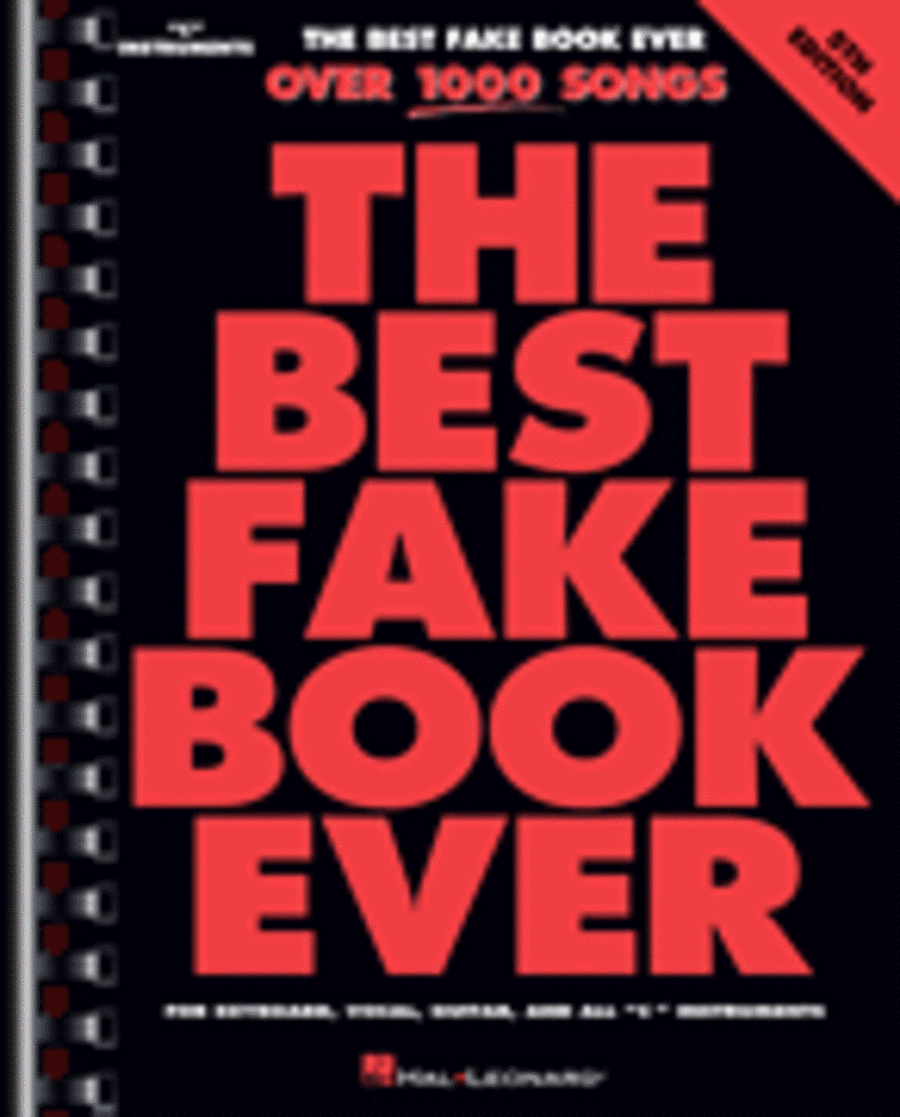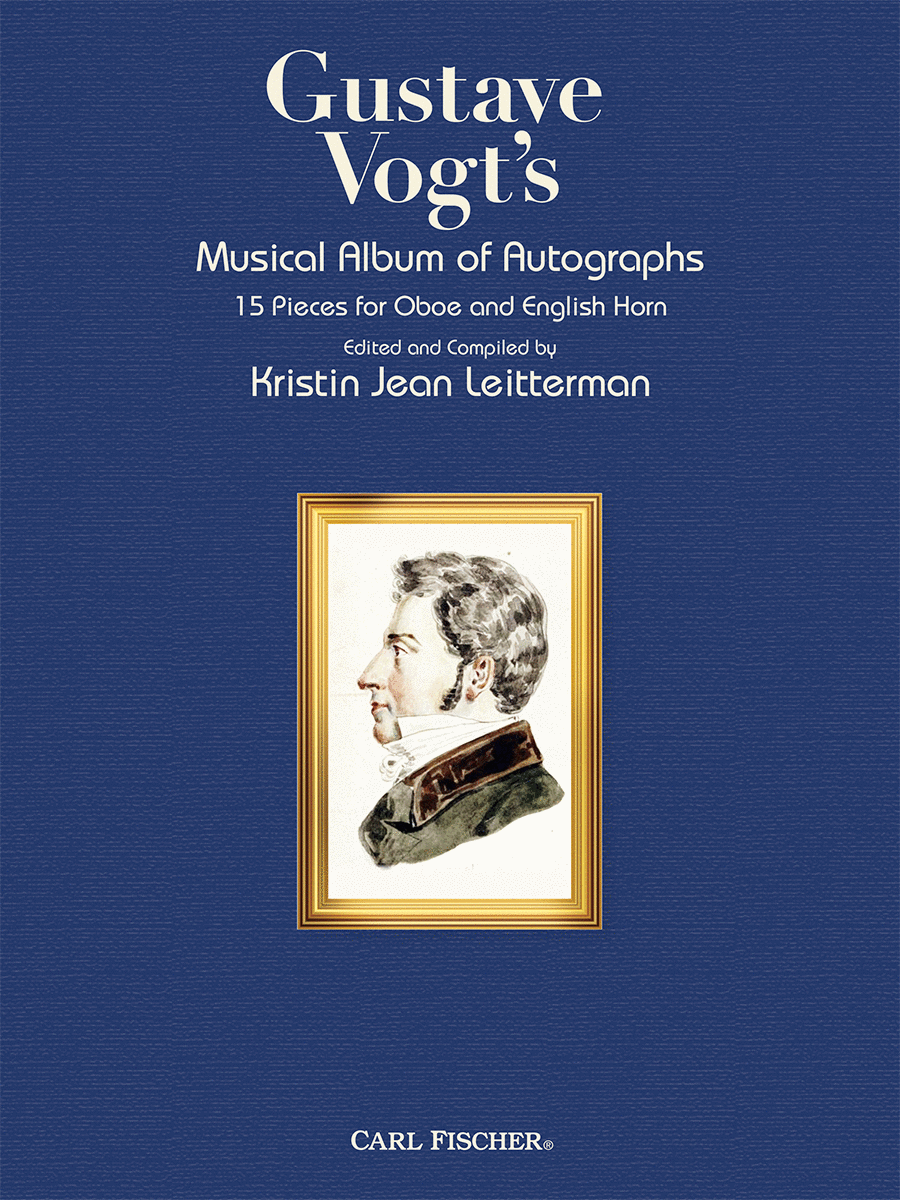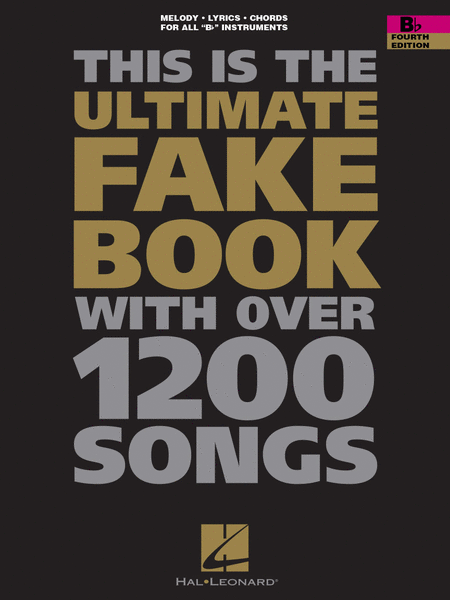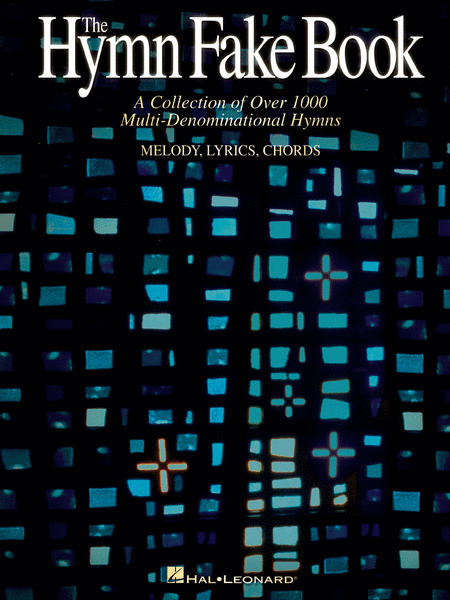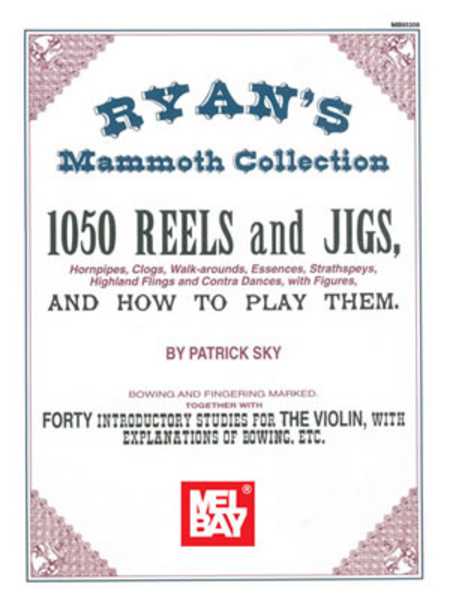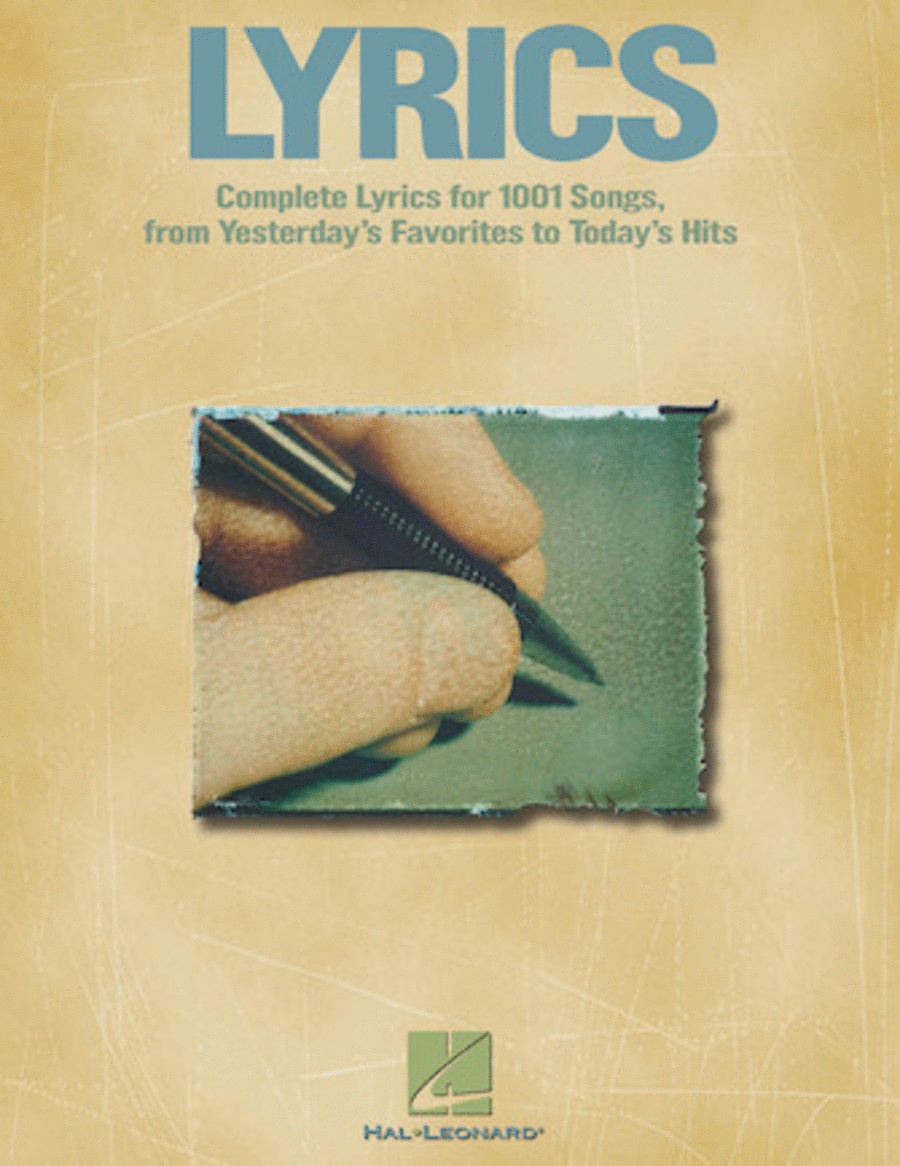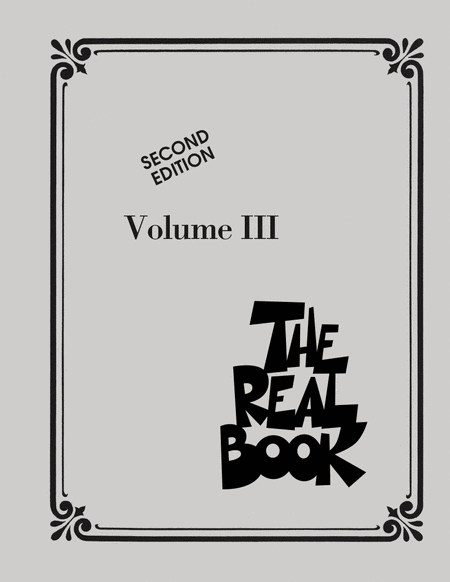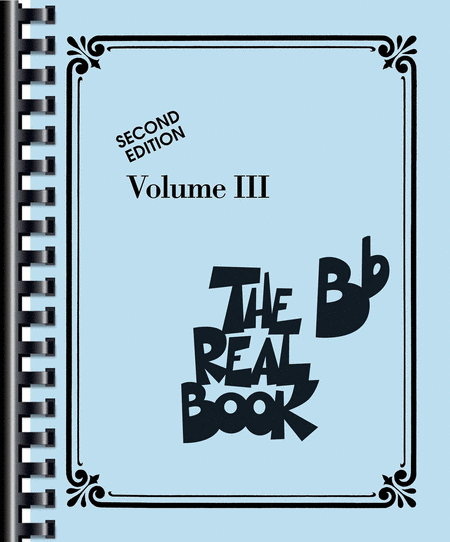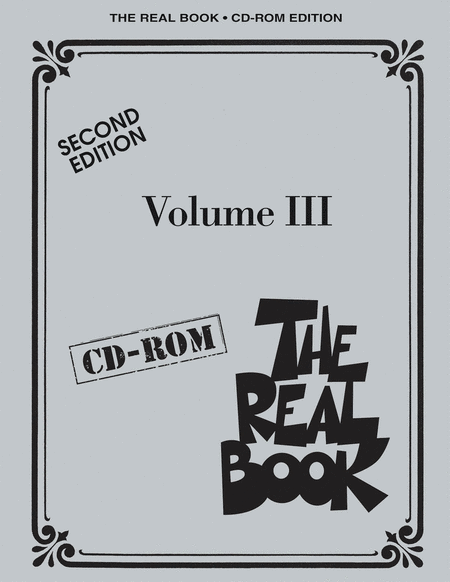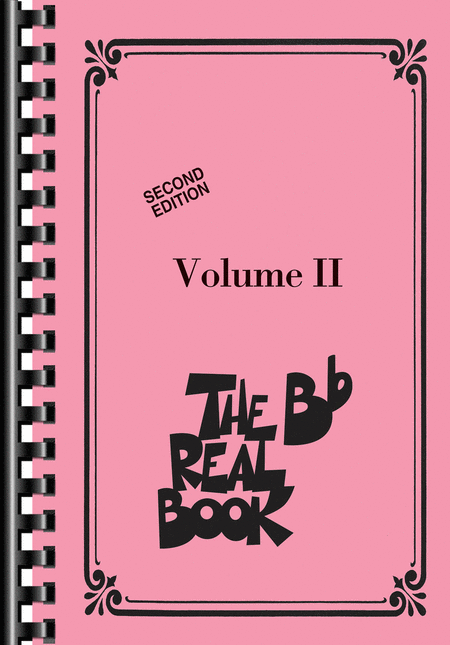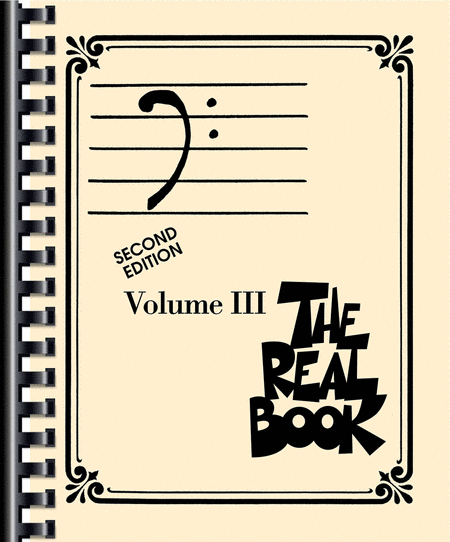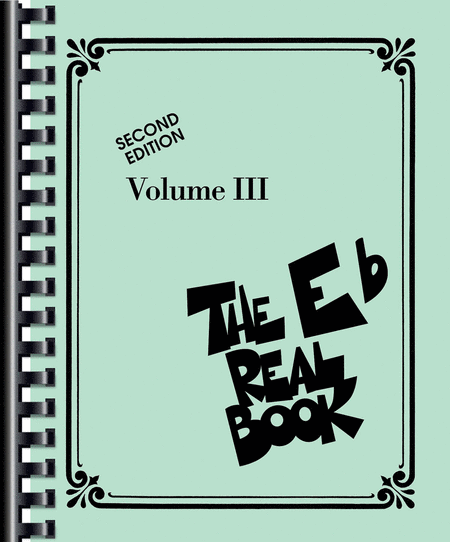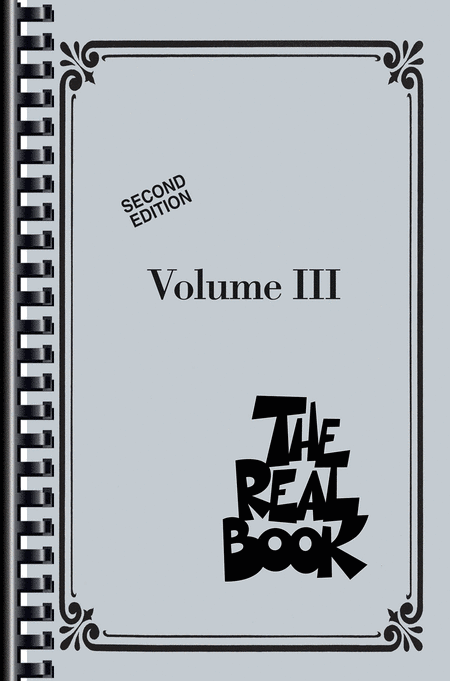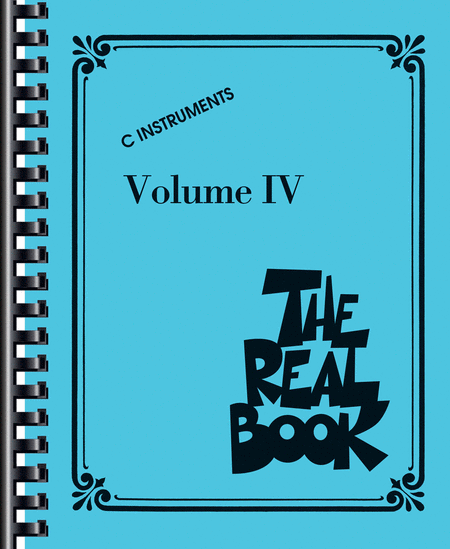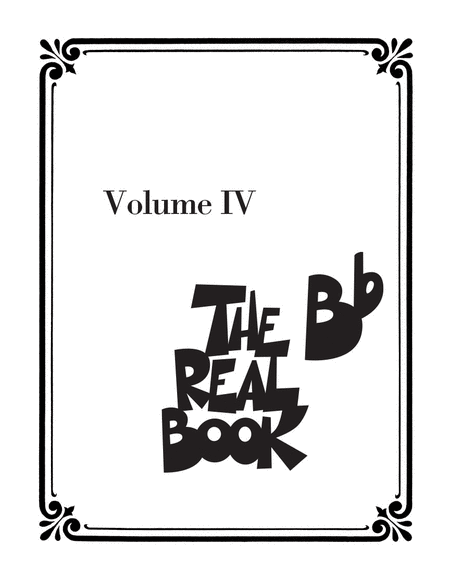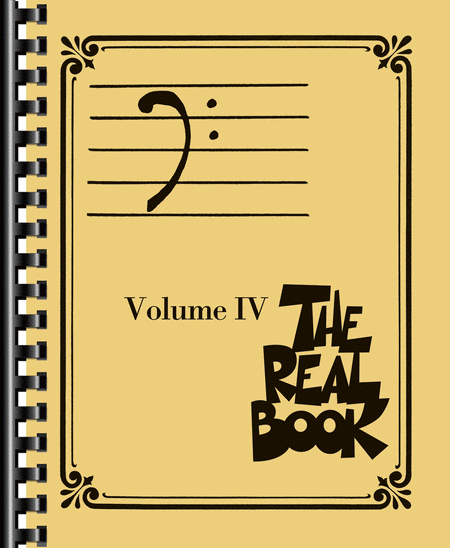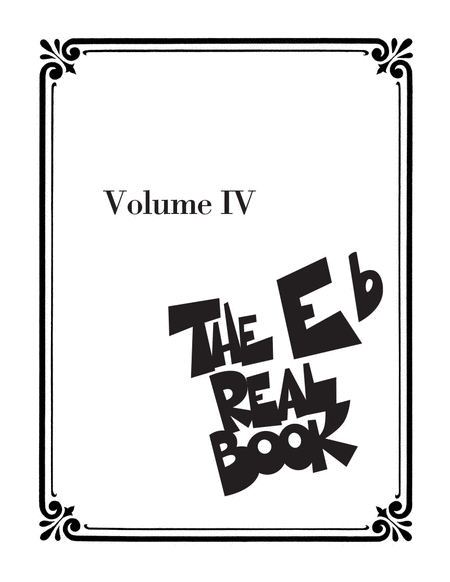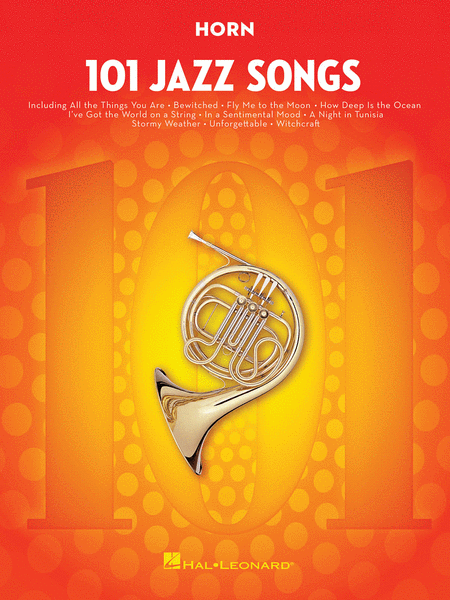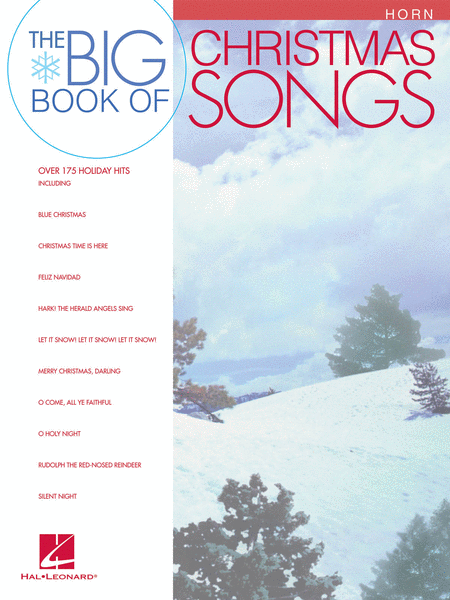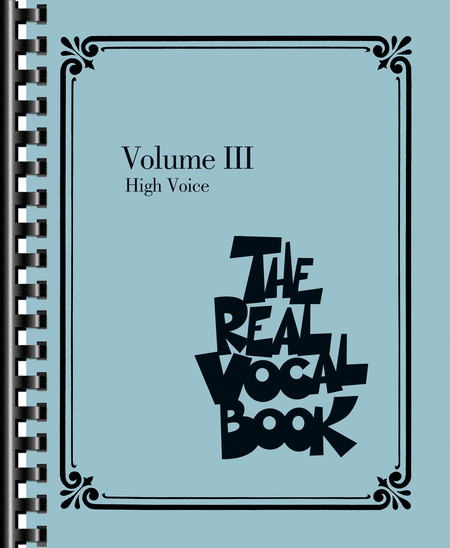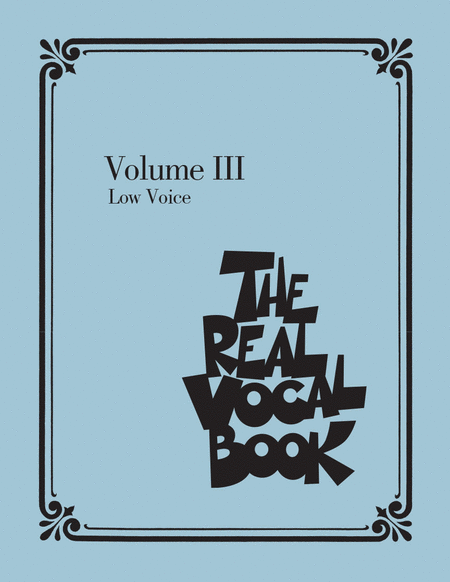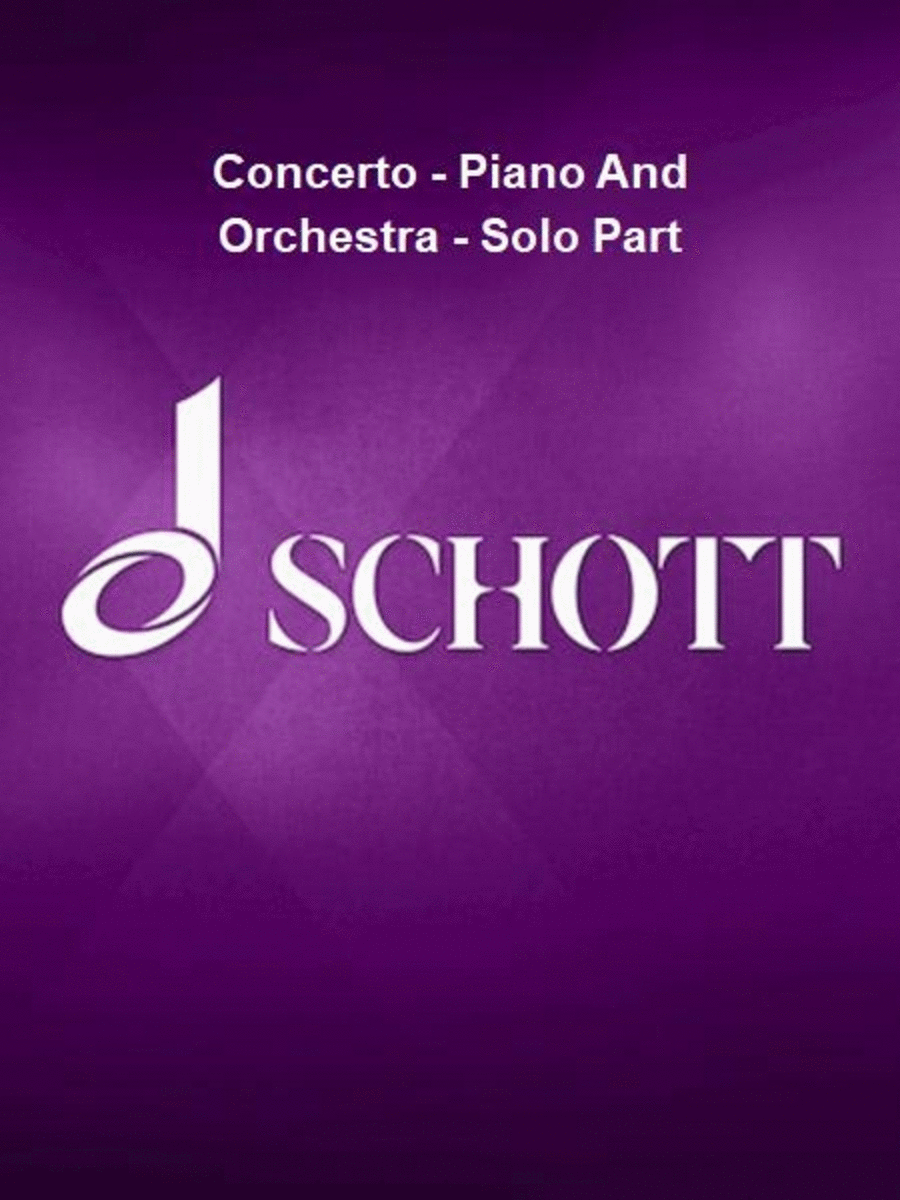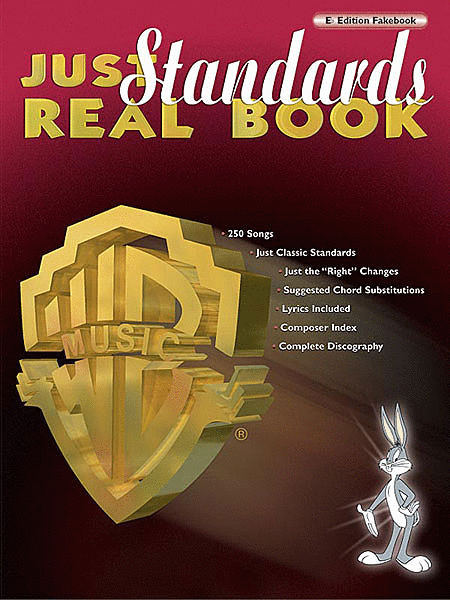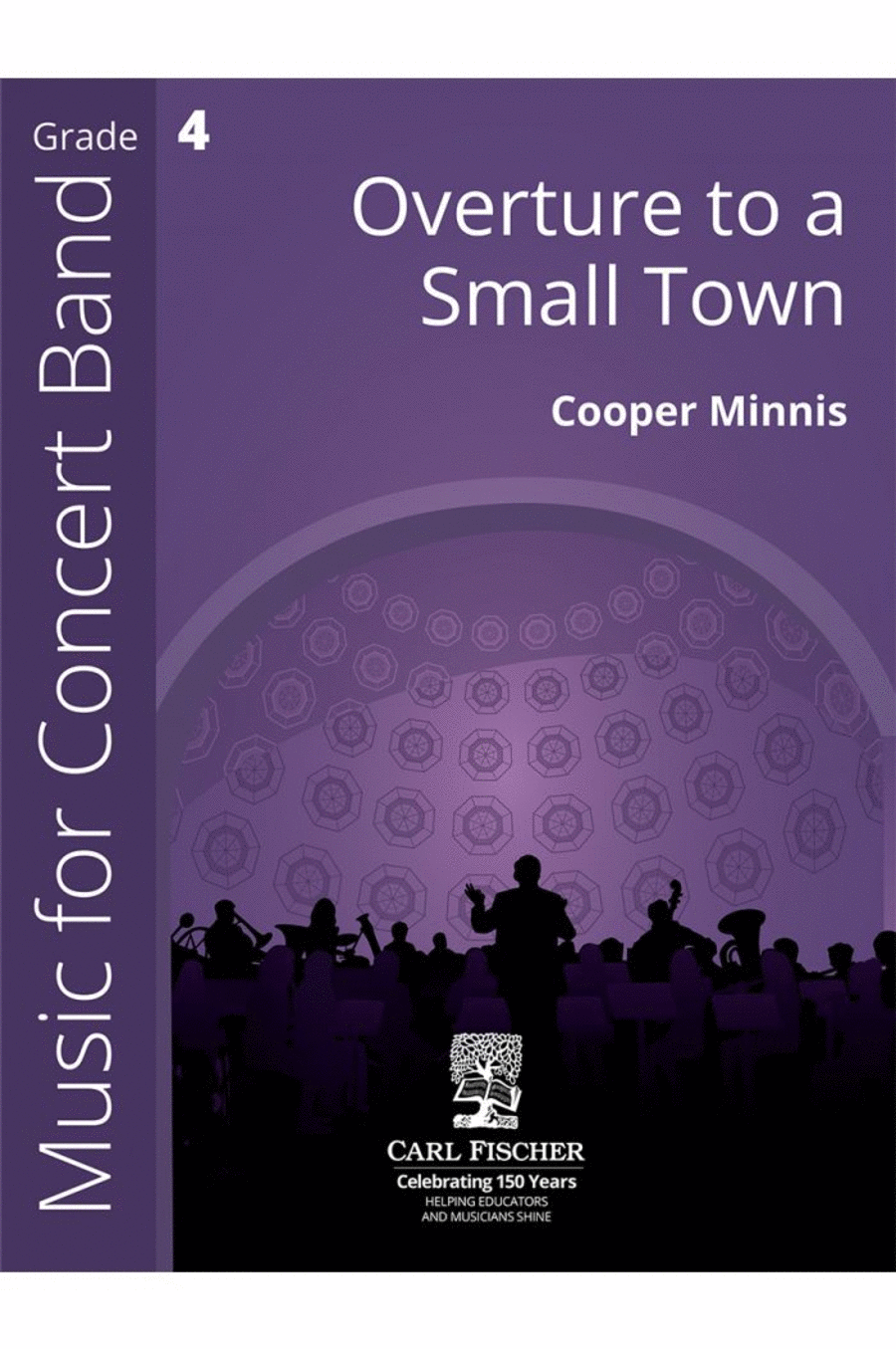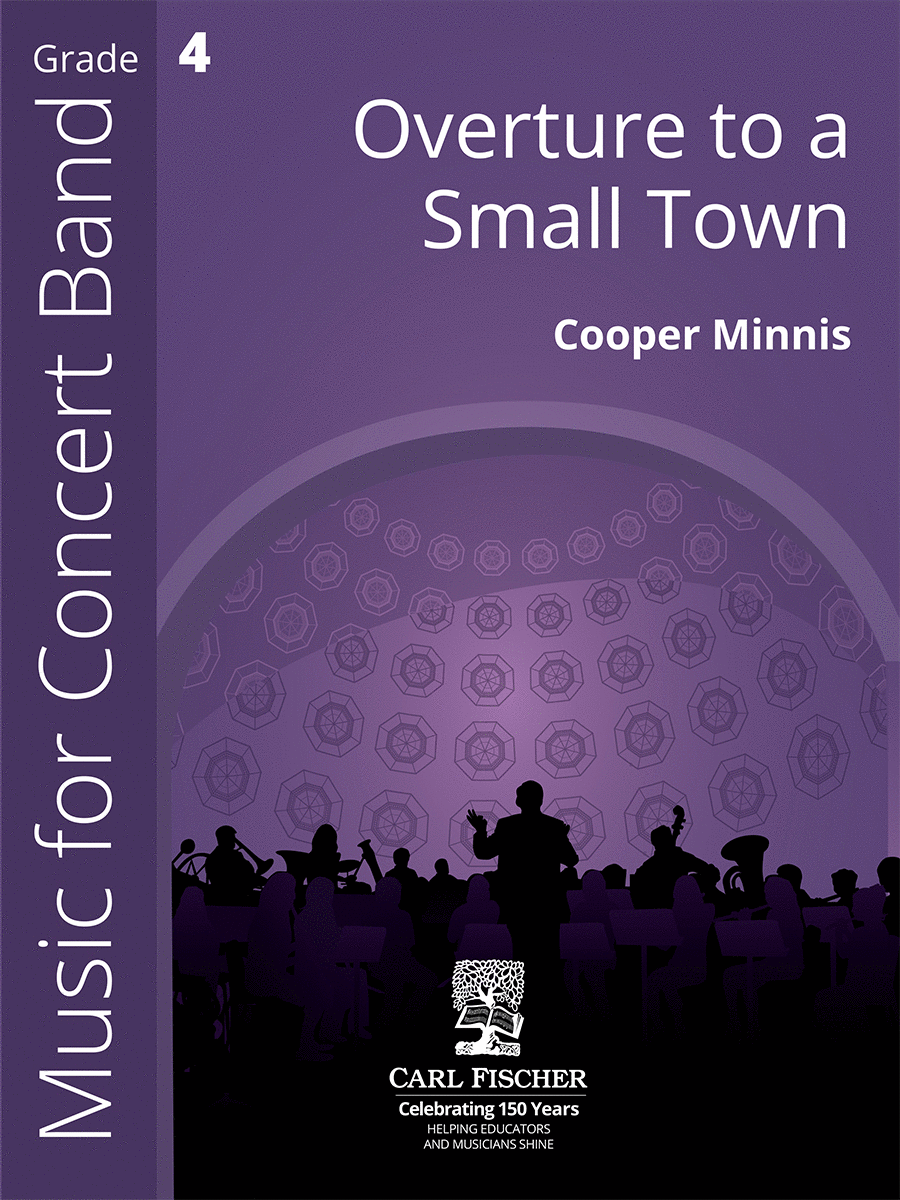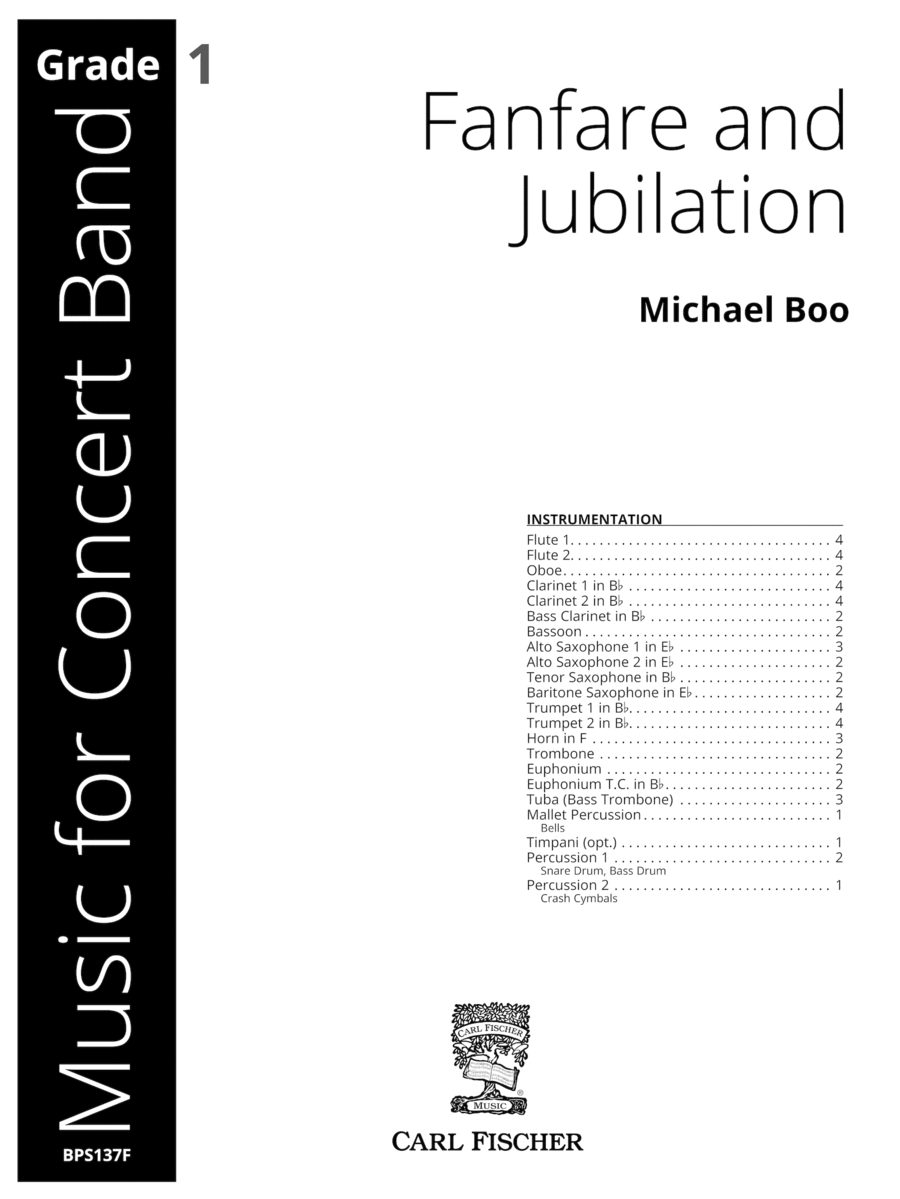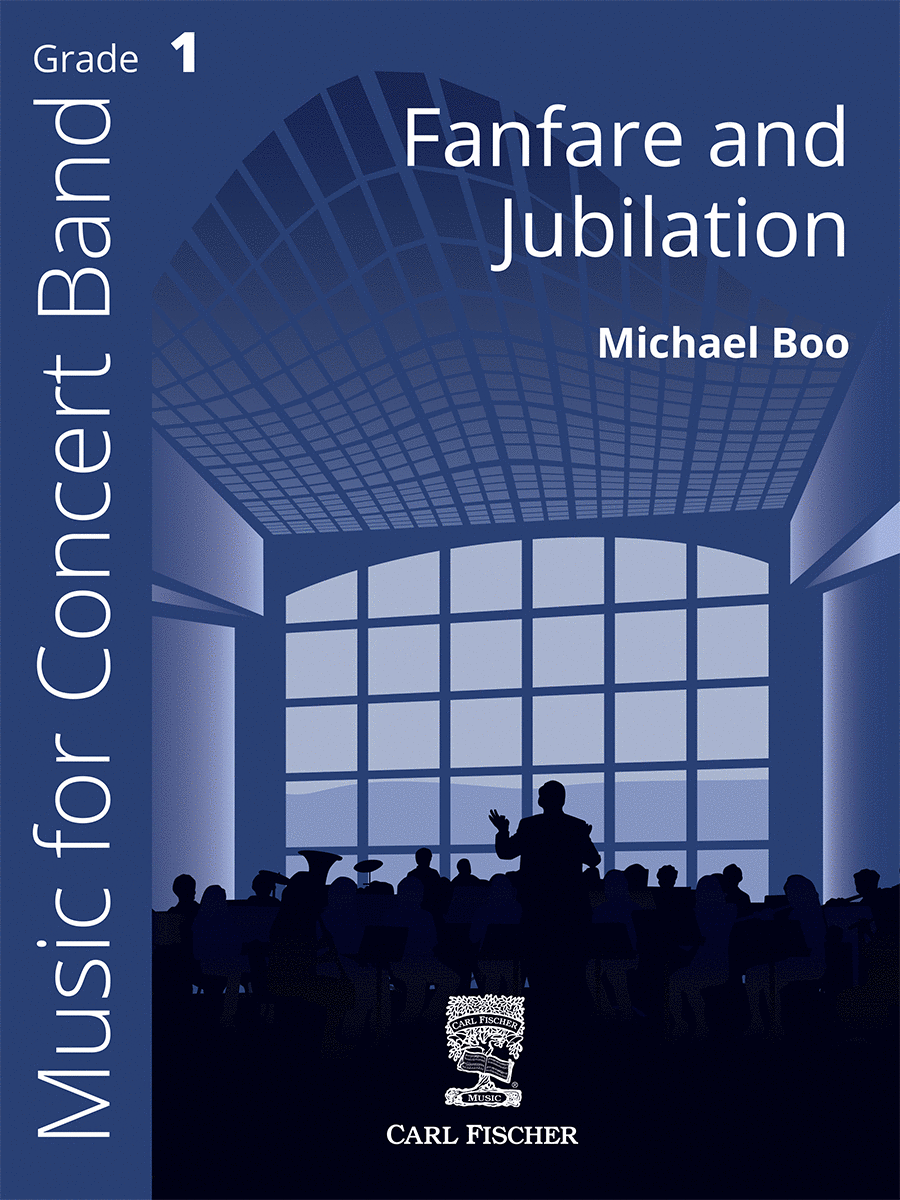|
| Best Fake Book Ever - 5th Edition
Instruments en Do [Fake Book]
Hal Leonard
C Edition. Composed by Various. Fake Book. Broadway, Country, Jazz, Pop, Stand...(+)
C Edition. Composed by
Various. Fake Book.
Broadway,
Country, Jazz, Pop,
Standards.
Softcover. 802 pages.
Published by Hal Leonard
$49.99 - Voir plus => AcheterDélais: 24 hours - In Stock | | | |
| Gustave Vogt's Musical Album of Autographs
Cor anglais, Piano
Carl Fischer
Chamber Music English Horn, Oboe SKU: CF.WF229 15 Pieces for Oboe and ...(+)
Chamber Music English
Horn, Oboe SKU:
CF.WF229 15 Pieces
for Oboe and English
Horn. Composed by
Gustave Vogt. Edited by
Kristin Jean Leitterman.
Collection - Performance.
32+8 pages. Carl Fischer
Music #WF229. Published
by Carl Fischer Music
(CF.WF229). ISBN
9781491153789. UPC:
680160911288. Intro
duction Gustave Vogt's
Musical Paris Gustave
Vogt (1781-1870) was born
into the Age of
Enlightenment, at the
apex of the
Enlightenment's outreach.
During his lifetime he
would observe its effect
on the world. Over the
course of his life he
lived through many
changes in musical style.
When he was born,
composers such as Mozart
and Haydn were still
writing masterworks
revered today, and
eighty-nine years later,
as he departed the world,
the new realm of
Romanticism was beginning
to emerge with Mahler,
Richard Strauss and
Debussy, who were soon to
make their respective
marks on the musical
world. Vogt himself left
a huge mark on the
musical world, with
critics referring to him
as the grandfather of the
modern oboe and the
premier oboist of Europe.
Through his eighty-nine
years, Vogt would live
through what was perhaps
the most turbulent period
of French history. He
witnessed the French
Revolution of 1789,
followed by the many
newly established
governments, only to die
just months before the
establishment of the
Third Republic in 1870,
which would be the
longest lasting
government since the
beginning of the
revolution. He also
witnessed the
transformation of the
French musical world from
one in which opera
reigned supreme, to one
in which virtuosi,
chamber music, and
symphonic music ruled.
Additionally, he
experienced the
development of the oboe
right before his eyes.
When he began playing in
the late eighteenth
century, the standard
oboe had two keys (E and
Eb) and at the time of
his death in 1870, the
System Six Triebert oboe
(the instrument adopted
by Conservatoire
professor, Georges
Gillet, in 1882) was only
five years from being
developed. Vogt was born
March 18, 1781 in the
ancient town of
Strasbourg, part of the
Alsace region along the
German border. At the
time of his birth,
Strasbourg had been
annexed by Louis XIV, and
while heavily influenced
by Germanic culture, had
been loosely governed by
the French for a hundred
years. Although it is
unclear when Vogt began
studying the oboe and
when his family made its
move to the French
capital, the Vogts may
have fled Strasbourg in
1792 after much of the
city was destroyed during
the French Revolution. He
was without question
living in Paris by 1798,
as he enrolled on June 8
at the newly established
Conservatoire national de
Musique to study oboe
with the school's first
oboe professor,
Alexandre-Antoine
Sallantin (1775-1830).
Vogt's relationship with
the Conservatoire would
span over half a century,
moving seamlessly from
the role of student to
professor. In 1799, just
a year after enrolling,
he was awarded the
premier prix, becoming
the fourth oboist to
achieve this award. By
1802 he had been
appointed repetiteur,
which involved teaching
the younger students and
filling in for Sallantin
in exchange for a free
education. He maintained
this rank until 1809,
when he was promoted to
professor adjoint and
finally to professor
titulaire in 1816 when
Sallantin retired. This
was a position he held
for thirty-seven years,
retiring in 1853, making
him the longest serving
oboe professor in the
school's history. During
his tenure, he became the
most influential oboist
in France, teaching
eighty-nine students,
plus sixteen he taught
while he was professor
adjoint and professor
titulaire. Many of these
students went on to be
famous in their own
right, such as Henri Brod
(1799-1839), Apollon
Marie-Rose Barret
(1804-1879), Charles
Triebert (1810-1867),
Stanislas Verroust
(1814-1863), and Charles
Colin (1832-1881). His
influence stretches from
French to American oboe
playing in a direct line
from Charles Colin to
Georges Gillet
(1854-1920), and then to
Marcel Tabuteau
(1887-1966), the oboist
Americans lovingly
describe as the father of
American oboe playing.
Opera was an important
part of Vogt's life. His
first performing position
was with the
Theatre-Montansier while
he was still studying at
the Conservatoire.
Shortly after, he moved
to the Ambigu-Comique
and, in 1801 was
appointed as first oboist
with the Theatre-Italien
in Paris. He had been in
this position for only a
year, when he began
playing first oboe at the
Opera-Comique. He
remained there until
1814, when he succeeded
his teacher,
Alexandre-Antoine
Sallantin, as soloist
with the Paris Opera, the
top orchestra in Paris at
the time. He played with
the Paris Opera until
1834, all the while
bringing in his current
and past students to fill
out the section. In this
position, he began to
make a name for himself;
so much so that specific
performances were
immortalized in memoirs
and letters. One comes
from a young Hector
Berlioz (1803-1865) after
having just arrived in
Paris in 1822 and
attended the Paris
Opera's performance of
Mehul's Stratonice and
Persuis' ballet Nina. It
was in response to the
song Quand le bien-amie
reviendra that Berlioz
wrote: I find it
difficult to believe that
that song as sung by her
could ever have made as
true and touching an
effect as the combination
of Vogt's instrument...
Shortly after this,
Berlioz gave up studying
medicine and focused on
music. Vogt frequently
made solo and chamber
appearances throughout
Europe. His busiest
period of solo work was
during the 1820s. In 1825
and 1828 he went to
London to perform as a
soloist with the London
Philharmonic Society.
Vogt also traveled to
Northern France in 1826
for concerts, and then in
1830 traveled to Munich
and Stuttgart, visiting
his hometown of
Strasbourg on the way.
While on tour, Vogt
performed Luigi
Cherubini's (1760-1842)
Ave Maria, with soprano
Anna (Nanette) Schechner
(1806-1860), and a
Concertino, presumably
written by himself. As a
virtuoso performer in
pursuit of repertoire to
play, Vogt found himself
writing much of his own
music. His catalog
includes chamber music,
variation sets, vocal
music, concerted works,
religious music, wind
band arrangements, and
pedagogical material. He
most frequently performed
his variation sets, which
were largely based on
themes from popular
operas he had, presumably
played while he was at
the Opera. He made his
final tour in 1839,
traveling to Tours and
Bordeaux. During this
tour he appeared with the
singer Caroline Naldi,
Countess de Sparre, and
the violinist Joseph
Artot (1815-1845). This
ended his active career
as a soloist. His
performance was described
in the Revue et gazette
musicale de Paris as
having lost none of his
superiority over the
oboe.... It's always the
same grace, the same
sweetness. We made a trip
to Switzerland, just by
closing your eyes and
listening to Vogt's oboe.
Vogt was also active
performing in Paris as a
chamber and orchestral
musician. He was one of
the founding members of
the Societe des Concerts
du Conservatoire, a group
established in 1828 by
violinist and conductor
Francois-Antoine Habeneck
(1781-1849). The group
featured faculty and
students performing
alongside each other and
works such as Beethoven
symphonies, which had
never been heard in
France. He also premiered
the groundbreaking
woodwind quintets of
Antonin Reicha
(1770-1836). After his
retirement from the Opera
in 1834 and from the
Societe des Concerts du
Conservatoire in 1842,
Vogt began to slow down.
His final known
performance was of
Cherubini's Ave Maria on
English horn with tenor
Alexis Dupont (1796-1874)
in 1843. He then began to
reflect on his life and
the people he had known.
When he reached his 60s,
he began gathering
entries for his Musical
Album of Autographs.
Autograph Albums Vogt's
Musical Album of
Autographs is part of a
larger practice of
keeping autograph albums,
also commonly known as
Stammbuch or Album
Amicorum (meaning book of
friendship or friendship
book), which date back to
the time of the
Reformation and the
University of Wittenberg.
It was during the
mid-sixteenth century
that students at the
University of Wittenberg
began passing around
bibles for their fellow
students and professors
to sign, leaving messages
to remember them by as
they moved on to the next
part of their lives. The
things people wrote were
mottos, quotes, and even
drawings of their family
coat of arms or some
other scene that meant
something to the owner.
These albums became the
way these young students
remembered their school
family once they had
moved on to another
school or town. It was
also common for the
entrants to comment on
other entries and for the
owner to amend entries
when they learned of
important life details
such as marriage or
death. As the practice
continued, bibles were
set aside for emblem
books, which was a
popular book genre that
featured allegorical
illustrations (emblems)
in a tripartite form:
image, motto, epigram.
The first emblem book
used for autographs was
published in 1531 by
Andrea Alciato
(1492-1550), a collection
of 212 Latin emblem
poems. In 1558, the first
book conceived for the
purpose of the album
amicorum was published by
Lyon de Tournes
(1504-1564) called the
Thesaurus Amicorum. These
books continued to
evolve, and spread to
wider circles away from
universities. Albums
could be found being kept
by noblemen, physicians,
lawyers, teachers,
painters, musicians, and
artisans. The albums
eventually became more
specialized, leading to
Musical Autograph Albums
(or Notestammbucher).
Before this
specialization, musicians
contributed in one form
or another, but our
knowledge of them in
these albums is mostly
limited to individual
people or events. Some
would simply sign their
name while others would
insert a fragment of
music, usually a canon
(titled fuga) with text
in Latin. Canons were
popular because they
displayed the
craftsmanship of the
composer in a limited
space. Composers
well-known today,
including J. S. Bach,
Telemann, Mozart,
Beethoven, Dowland, and
Brahms, all participated
in the practice, with
Beethoven being the first
to indicate an interest
in creating an album only
of music. This interest
came around 1815. In an
1845 letter from Johann
Friedrich Naue to
Heinrich Carl
Breidenstein, Naue
recalled an 1813 visit
with Beethoven, who
presented a book
suggesting Naue to
collect entries from
celebrated musicians as
he traveled. Shortly
after we find Louis Spohr
speaking about leaving on
his grand tour through
Europe in 1815 and of his
desire to carry an album
with entries from the
many artists he would
come across. He wrote in
his autobiography that
his most valuable
contribution came from
Beethoven in 1815.
Spohr's Notenstammbuch,
comprised only of musical
entries, is
groundbreaking because it
was coupled with a
concert tour, allowing
him to reach beyond the
Germanic world, where the
creation of these books
had been nearly
exclusive. Spohr brought
the practice of
Notenstammbucher to
France, and in turn
indirectly inspired Vogt
to create a book of his
own some fifteen years
later. Vogt's Musical
Album of Autographs
Vogt's Musical Album of
Autographs acts as a form
of a memoir, displaying
mementos of musicians who
held special meaning in
his life as well as
showing those with whom
he was enamored from the
younger generation. The
anonymous Pie Jesu
submitted to Vogt in 1831
marks the beginning of an
album that would span
nearly three decades by
the time the final entry,
an excerpt from Charles
Gounod's (1818-1893)
Faust, which premiered in
1859, was submitted.
Within this album we find
sixty-two entries from
musicians whom he must
have known very well
because they were
colleagues at the
Conservatoire, or
composers of opera whose
works he was performing
with the Paris Opera.
Other entries came from
performers with whom he
had performed and some
who were simply passing
through Paris, such as
Joseph Joachim
(1831-1907). Of the
sixty-three total
entries, some are
original, unpublished
works, while others came
from well-known existing
works. Nineteen of these
works are for solo piano,
sixteen utilize the oboe
or English horn, thirteen
feature the voice (in
many different
combinations, including
vocal solos with piano,
and small choral settings
up to one with double
choir), two feature
violin as a solo
instrument, and one even
features the now obscure
ophicleide. The
connections among the
sixty-two contributors to
Vogt's album are
virtually never-ending.
All were acquainted with
Vogt in some capacity,
from long-time
friendships to
relationships that were
created when Vogt
requested their entry.
Thus, while Vogt is the
person who is central to
each of these musicians,
the web can be greatly
expanded. In general, the
connections are centered
around the Conservatoire,
teacher lineages, the
Opera, and performing
circles. The
relationships between all
the contributors in the
album parallel the
current musical world, as
many of these kinds of
relationships still
exist, and permit us to
fantasize who might be
found in an album created
today by a musician of
the same standing. Also
important, is what sort
of entries the
contributors chose to
pen. The sixty-three
entries are varied, but
can be divided into
published and unpublished
works. Within the
published works, we find
opera excerpts, symphony
excerpts, mass excerpts,
and canons, while the
unpublished works include
music for solo piano,
oboe or English horn,
string instruments
(violin and cello), and
voice (voice with piano
and choral). The music
for oboe and English horn
works largely belong in
the unpublished works of
the album. These entries
were most likely written
to honor Vogt. Seven are
for oboe and piano and
were contributed by
Joseph Joachim, Pauline
Garcia Viardot
(1821-1910), Joseph
Artot, Anton Bohrer
(1783-1852), Georges
Onslow (1784-1853),
Desire Beaulieu
(1791-1863), and Narcisse
Girard (1797-1860). The
common thread between
these entries is the
simplicity of the melody
and structure. Many are
repetitive, especially
Beaulieu's entry, which
features a two-note
ostinato throughout the
work, which he even
included in his
signature. Two composers
contributed pieces for
English horn and piano,
and like the previous
oboe entries, are simple
and repetitive. These
were written by Michele
Carafa (1787-1872) and
Louis Clapisson
(1808-1866). There are
two other entries that
were unpublished works
and are chamber music.
One is an oboe trio by
Jacques Halevy
(1799-1862) and the other
is for oboe and strings
(string trio) by J. B.
Cramer (1771-1858). There
are five published works
in the album for oboe and
English horn. There are
three from operas and the
other two from symphonic
works. Ambroise Thomas
(1811-1896) contributed
an excerpt from the
Entr'acte of his opera La
Guerillero, and was
likely chosen because the
oboe was featured at this
moment. Hippolyte Chelard
(1789-1861) also chose to
honor Vogt by writing for
English horn. His entry,
for English horn and
piano, is taken from his
biggest success, Macbeth.
The English horn part was
actually taken from Lady
Macbeth's solo in the
sleepwalking scene.
Vogt's own entry also
falls into this category,
as he entered an excerpt
from Donizetti's Maria di
Rohan. The excerpt he
chose is a duet between
soprano and English horn.
There are two entries
featuring oboe that are
excerpted from symphonic
repertoire. One is a
familiar oboe melody from
Beethoven's Pastoral
Symphony entered by his
first biographer, Anton
Schindler (1796-1864).
The other is an excerpt
from Berlioz's choral
symphony, Romeo et
Juliette. He entered an
oboe solo from the Grand
Fete section of the
piece. Pedagogical
benefit All of these
works are lovely, and fit
within the album
wonderfully, but these
works also are great oboe
and English horn music
for young students. The
common thread between
these entries is the
simplicity of the melody
and structure. Many are
repetitive, especially
Beaulieu's entry, which
features a two-note
ostinato throughout the
work in the piano. This
repetitive structure is
beneficial for young
students for searching
for a short solo to
present at a studio
recital, or simply to
learn. They also work
many technical issues a
young player may
encounter, such as
mastering the rolling
finger to uncover and
recover the half hole.
This is true of Bealieu's
Pensee as well as
Onslow's Andantino.
Berlioz's entry from
Romeo et Juliette
features very long
phrases, which helps with
endurance and helps keep
the air spinning through
the oboe. Some of the
pieces also use various
levels of ornamentation,
from trills to grace
notes, and short
cadenzas. This allows the
student to learn
appropriate ways to
phrase with these added
notes. The chamber music
is a valuable way to
start younger students
with chamber music,
especially the short
quartet by Cramer for
oboe and string trio. All
of these pieces will not
tax the student to learn
a work that is more
advanced, as well as give
them a full piece that
they can work on from
beginning to end in a
couple weeks, instead of
months. Editorial Policy
The works found in this
edition are based on the
manuscript housed at the
Morgan Library in New
York City (call number
Cary 348, V886. A3). When
possible, published
scores were consulted and
compared to clarify pitch
and text. The general
difficulties in creating
an edition of these works
stem from entries that
appear to be hastily
written, and thus omit
complete articulations
and dynamic indications
for all passages and
parts. The manuscript has
been modernized into a
performance edition. The
score order from the
manuscript has been
retained. If an entry
also exists in a
published work, and this
was not indicated on the
manuscript, appropriate
titles and subtitles have
been added tacitly. For
entries that were
untitled, the beginning
tempo marking or
expressive directive has
been added as its title
tacitly. Part names have
been changed from the
original language to
English. If no part name
was present, it was added
tacitly. All scores are
transposing where
applicable. Measure
numbers have been added
at the beginning of every
system. Written
directives have been
retained in the original
language and are placed
relative to where they
appear in the manuscript.
Tempo markings from the
manuscript have been
retained, even if they
were abbreviated, i.e.,
Andte. The barlines,
braces, brackets, and
clefs are modernized. The
beaming and stem
direction has been
modernized. Key
signatures have been
modernized as some of the
flats/sharps do not
appear on the correct
lines or spaces. Time
signatures have been
modernized. In a few
cases, when a time
signature was missing in
the manuscript, it has
been added tacitly.
Triplet and rhythmic
groupings have been
modernized. Slurs, ties,
and articulations
(staccato and accent)
have been modernized.
Slurs, ties, and
articulations have been
added to parallel
passages tacitly.
Courtesy accidentals
found in the manuscript
have been removed, unless
it appeared to be helpful
to the performer. Dynamic
indications from the
manuscript have been
retained, except where
noted. --Kristin
Leitterman.
Introducti
onGustave Vogt’s
Musical ParisGustave Vogt
(1781–1870) was
born into the “Age
of Enlightenment,â€
at the apex of the
Enlightenment’s
outreach. During his
lifetime he would observe
its effect on the world.
Over the course of his
life he lived through
many changes in musical
style. When he was born,
composers such as Mozart
and Haydn were still
writing masterworks
revered today, and
eighty-nine years later,
as he departed the world,
the new realm of
Romanticism was beginning
to emerge with Mahler,
Richard Strauss and
Debussy, who were soon to
make their respective
marks on the musical
world. Vogt himself left
a huge mark on the
musical world, with
critics referring to him
as the “grandfather
of the modern oboeâ€
and the “premier
oboist of
Europe.â€Through his
eighty-nine years, Vogt
would live through what
was perhaps the most
turbulent period of
French history. He
witnessed the French
Revolution of 1789,
followed by the many
newly established
governments, only to die
just months before the
establishment of the
Third Republic in 1870,
which would be the
longest lasting
government since the
beginning of the
revolution. He also
witnessed the
transformation of the
French musical world from
one in which opera
reigned supreme, to one
in which virtuosi,
chamber music, and
symphonic music ruled.
Additionally, he
experienced the
development of the oboe
right before his eyes.
When he began playing in
the late eighteenth
century, the standard
oboe had two keys (E and
Eb) and at the time of
his death in 1870, the
“System Sixâ€
Triébert oboe (the
instrument adopted by
Conservatoire professor,
Georges Gillet, in 1882)
was only five years from
being developed.Vogt was
born March 18, 1781 in
the ancient town of
Strasbourg, part of the
Alsace region along the
German border. At the
time of his birth,
Strasbourg had been
annexed by Louis XIV, and
while heavily influenced
by Germanic culture, had
been loosely governed by
the French for a hundred
years. Although it is
unclear when Vogt began
studying the oboe and
when his family made its
move to the French
capital, the Vogts may
have fled Strasbourg in
1792 after much of the
city was destroyed during
the French Revolution. He
was without question
living in Paris by 1798,
as he enrolled on June 8
at the newly established
Conservatoire national de
Musique to study oboe
with the school’s
first oboe professor,
Alexandre-Antoine
Sallantin
(1775–1830).Vogtâ
€™s relationship with
the Conservatoire would
span over half a century,
moving seamlessly from
the role of student to
professor. In 1799, just
a year after enrolling,
he was awarded the
premier prix, becoming
the fourth oboist to
achieve this award. By
1802 he had been
appointed
répétiteur, which
involved teaching the
younger students and
filling in for Sallantin
in exchange for a free
education. He maintained
this rank until 1809,
when he was promoted to
professor adjoint and
finally to professor
titulaire in 1816 when
Sallantin retired. This
was a position he held
for thirty-seven years,
retiring in 1853, making
him the longest serving
oboe professor in the
school’s history.
During his tenure, he
became the most
influential oboist in
France, teaching
eighty-nine students,
plus sixteen he taught
while he was professor
adjoint and professor
titulaire. Many of these
students went on to be
famous in their own
right, such as Henri Brod
(1799–1839),
Apollon Marie-Rose Barret
(1804–1879),
Charles Triebert
(1810–1867),
Stanislas Verroust
(1814–1863), and
Charles Colin
(1832–1881). His
influence stretches from
French to American oboe
playing in a direct line
from Charles Colin to
Georges Gillet
(1854–1920), and
then to Marcel Tabuteau
(1887–1966), the
oboist Americans lovingly
describe as the
“father of American
oboe playing.â€Opera
was an important part of
Vogt’s life. His
first performing position
was with the
Théâtre-Montansier
while he was still
studying at the
Conservatoire. Shortly
after, he moved to the
Ambigu-Comique and, in
1801 was appointed as
first oboist with the
Théâtre-Italien in
Paris. He had been in
this position for only a
year, when he began
playing first oboe at the
Opéra-Comique. He
remained there until
1814, when he succeeded
his teacher,
Alexandre-Antoine
Sallantin, as soloist
with the Paris Opéra,
the top orchestra in
Paris at the time. He
played with the Paris
Opéra until 1834, all
the while bringing in his
current and past students
to fill out the section.
In this position, he
began to make a name for
himself; so much so that
specific performances
were immortalized in
memoirs and letters. One
comes from a young Hector
Berlioz
(1803–1865) after
having just arrived in
Paris in 1822 and
attended the Paris
Opéra’s
performance of
Mehul’s Stratonice
and Persuis’
ballet Nina. It was in
response to the song
Quand le bien-amié
reviendra that Berlioz
wrote: “I find it
difficult to believe that
that song as sung by her
could ever have made as
true and touching an
effect as the combination
of Vogt’s
instrument…â€
Shortly after this,
Berlioz gave up studying
medicine and focused on
music.Vogt frequently
made solo and chamber
appearances throughout
Europe. His busiest
period of solo work was
during the 1820s. In 1825
and 1828 he went to
London to perform as a
soloist with the London
Philharmonic Society.
Vogt also traveled to
Northern France in 1826
for concerts, and then in
1830 traveled to Munich
and Stuttgart, visiting
his hometown of
Strasbourg on the way.
While on tour, Vogt
performed Luigi
Cherubini’s
(1760–1842) Ave
Maria, with soprano Anna
(Nanette) Schechner
(1806–1860), and a
Concertino, presumably
written by himself. As a
virtuoso performer in
pursuit of repertoire to
play, Vogt found himself
writing much of his own
music. His catalog
includes chamber music,
variation sets, vocal
music, concerted works,
religious music, wind
band arrangements, and
pedagogical material. He
most frequently performed
his variation sets, which
were largely based on
themes from popular
operas he had, presumably
played while he was at
the Opéra.He made his
final tour in 1839,
traveling to Tours and
Bordeaux. During this
tour he appeared with the
singer Caroline Naldi,
Countess de Sparre, and
the violinist Joseph
Artôt
(1815–1845). This
ended his active career
as a soloist. His
performance was described
in the Revue et gazette
musicale de Paris as
having “lost none
of his superiority over
the oboe….
It’s always the
same grace, the same
sweetness. We made a trip
to Switzerland, just by
closing your eyes and
listening to
Vogt’s
oboe.â€Vogt was also
active performing in
Paris as a chamber and
orchestral musician. He
was one of the founding
members of the
Société des
Concerts du
Conservatoire, a group
established in 1828 by
violinist and conductor
François-Antoine
Habeneck
(1781–1849). The
group featured faculty
and students performing
alongside each other and
works such as Beethoven
symphonies, which had
never been heard in
France. He also premiered
the groundbreaking
woodwind quintets of
Antonin Reicha
(1770–1836).After
his retirement from the
Opéra in 1834 and from
the Société des
Concerts du Conservatoire
in 1842, Vogt began to
slow down. His final
known performance was of
Cherubini’s Ave
Maria on English horn
with tenor Alexis Dupont
(1796–1874) in
1843. He then began to
reflect on his life and
the people he had known.
When he reached his 60s,
he began gathering
entries for his Musical
Album of
Autographs.Autograph
AlbumsVogt’s
Musical Album of
Autographs is part of a
larger practice of
keeping autograph albums,
also commonly known as
Stammbuch or Album
Amicorum (meaning book of
friendship or friendship
book), which date back to
the time of the
Reformation and the
University of Wittenberg.
It was during the
mid-sixteenth century
that students at the
University of Wittenberg
began passing around
bibles for their fellow
students and professors
to sign, leaving messages
to remember them by as
they moved on to the next
part of their lives. The
things people wrote were
mottos, quotes, and even
drawings of their family
coat of arms or some
other scene that meant
something to the owner.
These albums became the
way these young students
remembered their school
family once they had
moved on to another
school or town. It was
also common for the
entrants to comment on
other entries and for the
owner to amend entries
when they learned of
important life details
such as marriage or
death.As the practice
continued, bibles were
set aside for emblem
books, which was a
popular book genre that
featured allegorical
illustrations (emblems)
in a tripartite form:
image, motto, epigram.
The first emblem book
used for autographs was
published in 1531 by
Andrea Alciato
(1492–1550), a
collection of 212 Latin
emblem poems. In 1558,
the first book conceived
for the purpose of the
album amicorum was
published by Lyon de
Tournes
(1504–1564) called
the Thesaurus Amicorum.
These books continued to
evolve, and spread to
wider circles away from
universities. Albums
could be found being kept
by noblemen, physicians,
lawyers, teachers,
painters, musicians, and
artisans.The albums
eventually became more
specialized, leading to
Musical Autograph Albums
(or Notestammbücher).
Before this
specialization, musicians
contributed in one form
or another, but our
knowledge of them in
these albums is mostly
limited to individual
people or events. Some
would simply sign their
name while others would
insert a fragment of
music, usually a canon
(titled fuga) with text
in Latin. Canons were
popular because they
displayed the
craftsmanship of the
composer in a limited
space. Composers
well-known today,
including J. S. Bach,
Telemann, Mozart,
Beethoven, Dowland, and
Brahms, all participated
in the practice, with
Beethoven being the first
to indicate an interest
in creating an album only
of music.This interest
came around 1815. In an
1845 letter from Johann
Friedrich Naue to
Heinrich Carl
Breidenstein, Naue
recalled an 1813 visit
with Beethoven, who
presented a book
suggesting Naue to
collect entries from
celebrated musicians as
he traveled. Shortly
after we find Louis Spohr
speaking about leaving on
his “grand
tour†through
Europe in 1815 and of his
desire to carry an album
with entries from the
many artists he would
come across. He wrote in
his autobiography that
his “most valuable
contribution†came
from Beethoven in 1815.
Spohr’s
Notenstammbuch, comprised
only of musical entries,
is groundbreaking because
it was coupled with a
concert tour, allowing
him to reach beyond the
Germanic world, where the
creation of these books
had been nearly
exclusive. Spohr brought
the practice of
Notenstammbücher to
France, and in turn
indirectly inspired Vogt
to create a book of his
own some fifteen years
later.Vogt’s
Musical Album of
AutographsVogt’s
Musical Album of
Autographs acts as a form
of a memoir, displaying
mementos of musicians who
held special meaning in
his life as well as
showing those with whom
he was enamored from the
younger generation. The
anonymous Pie Jesu
submitted to Vogt in 1831
marks the beginning of an
album that would span
nearly three decades by
the time the final entry,
an excerpt from Charles
Gounod’s
(1818–1893) Faust,
which premiered in 1859,
was submitted.Within this
album ... $16.99 - Voir plus => AcheterDélais: 1 to 2 weeks | | | |
| The Ultimate Fake Book - Third Edition (Bb version)
Instruments en Sib [Fake Book]
Hal Leonard
Bb Edition. Fake Book (Includes melody line and chords). Size 9x12 inches. 816 p...(+)
Bb Edition. Fake Book
(Includes melody line and
chords). Size 9x12
inches. 816 pages.
Published by Hal Leonard.
(8)$49.95 - Voir plus => AcheterDélais: 3 to 5 business days | | | |
| The Hymn Fake Book - C Edition
Ligne De Mélodie, Paroles et Accords [Fake Book] - Facile
Hal Leonard
For voice and C instrument. Format: fakebook (spiral bound). With vocal melody, ...(+)
For voice and C
instrument. Format:
fakebook (spiral bound).
With vocal melody,
lyrics, piano
accompaniment, chord
names and leadsheet
notation. Hymn. Series:
Hal Leonard Fake Books.
494 pages. 9x12 inches.
Published by Hal Leonard.
(3)$39.99 - Voir plus => AcheterDélais: 24 hours - In Stock | | | |
| Ryan's Mammoth Collection of Fiddle Tunes
Violon [Partition]
Mel Bay
Edited by Patrick Sky. For fiddle. All styles. Level: Multiple Levels. Book. Son...(+)
Edited by Patrick Sky.
For fiddle. All styles.
Level: Multiple Levels.
Book. Songbook. Size
8.75x11.75. 176 pages.
Published by Mel Bay
Pub., Inc.
$29.99 - Voir plus => AcheterDélais: 1 to 2 weeks | | | |
| Lyrics
Paroles Seulement [Partition]
Hal Leonard
Complete Lyrics for Over 1000 Songs from Broadway to Rock. By Various. Lyric Lib...(+)
Complete Lyrics for Over
1000 Songs from Broadway
to Rock. By Various.
Lyric Library. Softcover.
Size 8.5x11 inches. 373
pages. Published by Hal
Leonard.
(1)$29.99 - Voir plus => AcheterDélais: 24 hours - In Stock | | | |
| The Real Book - Volume 3
Fake Book [Fake Book]
Hal Leonard
C Instruments. By Various. Fake Book (Includes melody line and chords). Size 9x1...(+)
C Instruments. By
Various. Fake Book
(Includes melody line and
chords). Size 9x11
inches. 464 pages.
Published by Hal Leonard.
(4)$49.99 - Voir plus => AcheterDélais: 24 hours - In Stock | | | |
| The Real Book - Volume 3
Instruments en Sib [Fake Book]
Hal Leonard
Bb Edition. By Various. Fake Book (Includes melody line and chords). Size 8.5x11...(+)
Bb Edition. By Various.
Fake Book (Includes
melody line and chords).
Size 8.5x11 inches. 464
pages. Published by Hal
Leonard.
(1)$49.99 - Voir plus => AcheterDélais: 24 hours - In Stock | | | |
| The Real Book Volume III - Second Edition - CD-ROM
Tous Les Instruments [CD-ROM]
Hal Leonard
| | | |
| The Real Book - Volume II - Mini Edition
Hal Leonard
(B-flat Edition). Composed by Various. For C Instruments. Fake Book. Softcover. ...(+)
(B-flat Edition).
Composed by Various. For
C Instruments. Fake Book.
Softcover. 440 pages.
Published by Hal Leonard
$39.99 - Voir plus => AcheterDélais: 24 hours - In Stock | | | |
| The Real Book - Volume 3 (Bass Clef Instruments)
Bass Clef Instruments [Fake Book]
Hal Leonard
Bass Clef Edition. By Various. Fake Book (Includes melody line and chords). Soft...(+)
Bass Clef Edition. By
Various. Fake Book
(Includes melody line and
chords). Softcover. 464
pages. Published by Hal
Leonard.
$49.99 - Voir plus => AcheterDélais: 24 hours - In Stock | | | |
| The Real Book - Volume 3 (Eb Instruments)
Fake Book [Fake Book]
Hal Leonard
E Flat Edition. By Various. Fake Book (Includes melody line and chords). Softcov...(+)
E Flat Edition. By
Various. Fake Book
(Includes melody line and
chords). Softcover. Size
9x11 inches. 464 pages.
Published by Hal Leonard.
$49.99 - Voir plus => AcheterDélais: 24 hours - In Stock | | | |
| The Real Book - Volume 3 - Mini Edition
Fake Book [Fake Book]
Hal Leonard
Second Edition C Instruments. By Various. Fake Book (Includes melody line and ch...(+)
Second Edition C
Instruments. By Various.
Fake Book (Includes
melody line and chords).
Softcover. 464 pages.
Published by Hal Leonard.
$39.99 - Voir plus => AcheterDélais: 24 hours - In Stock | | | |
| The Real Book - Volume IV
Instruments en Do [Fake Book]
Hal Leonard
(C Edition). By Various. By Various. Fake Book. Softcover. 464 pages. Published ...(+)
(C Edition). By Various.
By Various. Fake Book.
Softcover. 464 pages.
Published by Hal Leonard
$49.99 - Voir plus => AcheterDélais: 24 hours - In Stock | | | |
| The Real Book - Volume IV
Instruments en Sib [Fake Book]
Hal Leonard
(B-flat Edition). By Various. By Various. For Bb Instruments. Fake Book. Softcov...(+)
(B-flat Edition). By
Various. By Various. For
Bb Instruments. Fake
Book. Softcover. 512
pages. Published by Hal
Leonard
$49.99 - Voir plus => AcheterDélais: 24 hours - In Stock | | | |
| The Real Book - Volume IV
Bass Clef Instruments
Hal Leonard
(Bass Clef Edition). By Various. By Various. For Bass Clef Instruments. Fake Boo...(+)
(Bass Clef Edition). By
Various. By Various. For
Bass Clef Instruments.
Fake Book. Softcover. 464
pages. Published by Hal
Leonard
$49.99 - Voir plus => AcheterDélais: 24 hours - In Stock | | | |
| The Real Book - Volume IV
Instruments en Mib [Fake Book]
Hal Leonard
(E-flat Edition). By Various. By Various. For Eb Instruments. Fake Book. Softcov...(+)
(E-flat Edition). By
Various. By Various. For
Eb Instruments. Fake
Book. Softcover. 464
pages. Published by Hal
Leonard
$54.99 - Voir plus => AcheterDélais: 24 hours - In Stock | | | |
| 101 Jazz Songs for Horn
Cor
Hal Leonard
Composed by Various. Instrumental Solo. Softcover. 104 pages. Published by...(+)
Composed by Various.
Instrumental Solo.
Softcover. 104 pages.
Published by Hal Leonard
$17.99 - Voir plus => AcheterDélais: 24 hours - In Stock | | | |
| Big Book of Christmas Songs for Horn
Cor
Hal Leonard
By Various Composers. Instrumental Folio. Size 9x12 inches. 146 pages. Published...(+)
By Various Composers.
Instrumental Folio. Size
9x12 inches. 146 pages.
Published by Hal Leonard.
$19.99 - Voir plus => AcheterDélais: 24 hours - In Stock | | | |
| The Real Vocal Book - Volume III
Voix haute [Fake Book]
Hal Leonard
(High Voice). By Various. For Vocal. Fake Book. 438 pages. Published by Hal Leon...(+)
(High Voice). By Various.
For Vocal. Fake Book. 438
pages. Published by Hal
Leonard
$39.99 - Voir plus => AcheterDélais: 24 hours - In Stock | | | |
| The Real Vocal Book - Volume III
Voix basse
Hal Leonard
(Low Voice). Composed by Various. For Vocal. Fake Book. 440 pages. Published by ...(+)
(Low Voice). Composed by
Various. For Vocal. Fake
Book. 440 pages.
Published by Hal Leonard
$39.99 - Voir plus => AcheterDélais: 24 hours - In Stock | | | |
| Concerto - Piano And Orchestra - Solo Part
Schott
Piano and orchestra - difficult SKU: HL.49046544 For piano and orchest...(+)
Piano and orchestra -
difficult SKU:
HL.49046544 For
piano and orchestra.
Composed by Gyorgy
Ligeti. This edition:
Saddle stitching. Sheet
music. Edition Schott.
Softcover. Composed
1985-1988. Duration 24'.
Schott Music #ED23178.
Published by Schott Music
(HL.49046544). ISBN
9781705122655. UPC:
842819108726.
9.0x12.0x0.224
inches. I composed
the Piano Concerto in two
stages: the first three
movements during the
years 1985-86, the next
two in 1987, the final
autograph of the last
movement was ready by
January, 1988. The
concerto is dedicated to
the American conductor
Mario di Bonaventura. The
markings of the movements
are the following: 1.
Vivace molto ritmico e
preciso 2. Lento e
deserto 3. Vivace
cantabile 4. Allegro
risoluto 5. Presto
luminoso.The first
performance of the
three-movement Concerto
was on October 23rd, 1986
in Graz. Mario di
Bonaventura conducted
while his brother,
Anthony di Bonaventura,
was the soloist. Two days
later the performance was
repeated in the Vienna
Konzerthaus. After
hearing the work twice, I
came to the conclusion
that the third movement
is not an adequate
finale; my feeling of
form demanded
continuation, a
supplement. That led to
the composing of the next
two movements. The
premiere of the whole
cycle took place on
February 29th, 1988, in
the Vienna Konzerthaus
with the same conductor
and the same pianist. The
orchestra consisted of
the following: flute,
oboe, clarinet, bassoon,
horn, trumpet, tenor
trombone, percussion and
strings. The flautist
also plays the piccoIo,
the clarinetist, the alto
ocarina. The percussion
is made up of diverse
instruments, which one
musician-virtuoso can
play. It is more
practical, however, if
two or three musicians
share the instruments.
Besides traditional
instruments the
percussion part calls
also for two simple wind
instruments: the swanee
whistle and the
harmonica. The string
instrument parts (two
violins, viola, cello and
doubles bass) can be
performed soloistic since
they do not contain
divisi. For balance,
however, the ensemble
playing is recommended,
for example 6-8 first
violins, 6-8 second, 4-6
violas, 4-6 cellos, 3-4
double basses. In the
Piano Concerto I realized
new concepts of harmony
and rhythm. The first
movement is entirely
written in bimetry:
simultaneously 12/8 and
4/4 (8/8). This relates
to the known triplet on a
doule relation and in
itself is nothing new.
Because, however, I
articulate 12 triola and
8 duola pulses, an
entangled, up till now
unheard kind of polymetry
is created. The rhythm is
additionally complicated
because of asymmetric
groupings inside two
speed layers, which means
accents are
asymmetrically
distributed. These
groups, as in the talea
technique, have a fixed,
continuously repeating
rhythmic structures of
varying lengths in speed
layers of 12/8 and 4/4.
This means that the
repeating pattern in the
12/8 level and the
pattern in the 4/4 level
do not coincide and
continuously give a
kaleidoscope of renewing
combinations. In our
perception we quickly
resign from following
particular rhythmical
successions and that what
is going on in time
appears for us as
something static,
resting. This music, if
it is played properly, in
the right tempo and with
the right accents inside
particular layers, after
a certain time 'rises, as
it were, as a plane after
taking off: the rhythmic
action, too complex to be
able to follow in detail,
begins flying. This
diffusion of individual
structures into a
different global
structure is one of my
basic compositional
concepts: from the end of
the fifties, from the
orchestral works
Apparitions and
Atmospheres I
continuously have been
looking for new ways of
resolving this basic
question. The harmony of
the first movement is
based on mixtures, hence
on the parallel leading
of voices. This technique
is used here in a rather
simple form; later in the
fourth movement it will
be considerably
developed. The second
movement (the only slow
one amongst five
movements) also has a
talea type of structure,
it is however much
simpler rhythmically,
because it contains only
one speed layer. The
melody is consisted in
the development of a
rigorous interval mode in
which two minor seconds
and one major second
alternate therefore nine
notes inside an octave.
This mode is transposed
into different degrees
and it also determines
the harmony of the
movement; however, in
closing episode in the
piano part there is a
combination of diatonics
(white keys) and
pentatonics (black keys)
led in brilliant,
sparkling quasimixtures,
while the orchestra
continues to play in the
nine tone mode. In this
movement I used isolated
sounds and extreme
registers (piccolo in a
very low register,
bassoon in a very high
register, canons played
by the swanee whistle,
the alto ocarina and
brass with a harmon-mute'
damper, cutting sound
combinations of the
piccolo, clarinet and
oboe in an extremely high
register, also
alternating of a
whistle-siren and
xylophone). The third
movement also has one
speed layer and because
of this it appears as
simpler than the first,
but actually the rhythm
is very complicated in a
different way here. Above
the uninterrupted, fast
and regular basic pulse,
thanks to the asymmetric
distribution of accents,
different types of
hemiolas and inherent
melodical patterns appear
(the term was coined by
Gerhard Kubik in relation
to central African
music). If this movement
is played with the
adequate speed and with
very clear accentuation,
illusory
rhythmic-melodical
figures appear. These
figures are not played
directly; they do not
appear in the score, but
exist only in our
perception as a result of
co-operation of different
voices. Already earlier I
had experimented with
illusory rhythmics,
namely in Poeme
symphonique for 100
metronomes (1962), in
Continuum for harpsichord
(1968), in Monument for
two pianos (1976), and
especially in the first
and sixth piano etude
Desordre and Automne a
Varsovie (1985). The
third movement of the
Piano Concerto is up to
now the clearest example
of illusory rhythmics and
illusory melody. In
intervallic and chordal
structure this movement
is based on alternation,
and also inter-relation
of various modal and
quasi-equidistant harmony
spaces. The tempered
twelve-part division of
the octave allows for
diatonical and other
modal interval
successions, which are
not equidistant, but are
based on the alternation
of major and minor
seconds in different
groups. The tempered
system also allows for
the use of the
anhemitonic pentatonic
scale (the black keys of
the piano). From
equidistant scales,
therefore interval
formations which are
based on the division of
an octave in equal
distances, the
twelve-tone tempered
system allows only
chromatics (only minor
seconds) and the six-tone
scale (the whole-tone:
only major seconds).
Moreover, the division of
the octave into four
parts only minor thirds)
and three parts (three
major thirds) is
possible. In several
music cultures different
equidistant divisions of
an octave are accepted,
for example, in the
Javanese slendro into
five parts, in Melanesia
into seven parts, popular
also in southeastern
Asia, and apart from
this, in southern Africa.
This does not mean an
exact equidistance: there
is a certain tolerance
for the inaccurateness of
the interval tuning.
These exotic for us,
Europeans, harmony and
melody have attracted me
for several years.
However I did not want to
re-tune the piano
(microtone deviations
appear in the concerto
only in a few places in
the horn and trombone
parts led in natural
tones). After the period
of experimenting, I got
to pseudo- or
quasiequidistant
intervals, which is
neither whole-tone nor
chromatic: in the
twelve-tone system, two
whole-tone scales are
possible, shifted a minor
second apart from each
other. Therefore, I
connect these two scales
(or sound resources), and
for example, places occur
where the melodies and
figurations in the piano
part are created from
both whole tone scales;
in one band one six-tone
sound resource is
utilized, and in the
other hand, the
complementary. In this
way whole-tonality and
chromaticism mutually
reduce themselves: a type
of deformed
equidistancism is formed,
strangely brilliant and
at the same time
slanting; illusory
harmony, indeed being
created inside the
tempered twelve-tone
system, but in sound
quality not belonging to
it anymore. The
appearance of such
slantedequidistant
harmony fields
alternating with modal
fields and based on
chords built on fifths
(mainly in the piano
part), complemented with
mixtures built on fifths
in the orchestra, gives
this movement an
individual, soft-metallic
colour (a metallic sound
resulting from
harmonics). The fourth
movement was meant to be
the central movement of
the Concerto. Its
melodc-rhythmic elements
(embryos or fragments of
motives) in themselves
are simple. The movement
also begins simply, with
a succession of
overlapping of these
elements in the mixture
type structures. Also
here a kaleidoscope is
created, due to a limited
number of these elements
- of these pebbles in the
kaleidoscope - which
continuously return in
augmentations and
diminutions. Step by
step, however, so that in
the beginning we cannot
hear it, a compiled
rhythmic organization of
the talea type gradually
comes into daylight,
based on the simultaneity
of two mutually shifted
to each other speed
layers (also triplet and
duoles, however, with
different asymmetric
structures than in the
first movement). While
longer rests are
gradually filled in with
motive fragments, we
slowly come to the
conclusion that we have
found ourselves inside a
rhythmic-melodical whirl:
without change in tempo,
only through increasing
the density of the
musical events, a
rotation is created in
the stream of successive
and compiled, augmented
and diminished motive
fragments, and increasing
the density suggests
acceleration. Thanks to
the periodical structure
of the composition,
always new but however of
the same (all the motivic
cells are similar to
earlier ones but none of
them are exactly
repeated; the general
structure is therefore
self-similar), an
impression is created of
a gigantic, indissoluble
network. Also, rhythmic
structures at first
hidden gradually begin to
emerge, two independent
speed layers with their
various internal
accentuations. This
great, self-similar whirl
in a very indirect way
relates to musical
associations, which came
to my mind while watching
the graphic projection of
the mathematical sets of
Julia and of Mandelbrot
made with the help of a
computer. I saw these
wonderful pictures of
fractal creations, made
by scientists from Brema,
Peitgen and Richter, for
the first time in 1984.
From that time they have
played a great role in my
musical concepts. This
does not mean, however,
that composing the fourth
movement I used
mathematical methods or
iterative calculus;
indeed, I did use
constructions which,
however, are not based on
mathematical thinking,
but are rather craftman's
constructions (in this
respect, my attitude
towards mathematics is
similar to that of the
graphic artist Maurits
Escher). I am concerned
rather with intuitional,
poetic, synesthetic
correspondence, not on
the scientific, but on
the poetic level of
thinking. The fifth, very
short Presto movement is
harmonically very simple,
but all the more
complicated in its
rhythmic structure: it is
based on the further
development of ''inherent
patterns of the third
movement. The
quasi-equidistance system
dominates harmonically
and melodically in this
movement, as in the
third, alternating with
harmonic fields, which
are based on the division
of the chromatic whole
into diatonics and
anhemitonic pentatonics.
Polyrhythms and harmonic
mixtures reach their
greatest density, and at
the same time this
movement is strikingly
light, enlightened with
very bright colours: at
first it seems chaotic,
but after listening to it
for a few times it is
easy to grasp its
content: many autonomous
but self-similar figures
which crossing
themselves. I present my
artistic credo in the
Piano Concerto: I
demonstrate my
independence from
criteria of the
traditional avantgarde,
as well as the
fashionable
postmodernism. Musical
illusions which I
consider to be also so
important are not a goal
in itself for me, but a
foundation for my
aesthetical attitude. I
prefer musical forms
which have a more
object-like than
processual character.
Music as frozen time, as
an object in imaginary
space evoked by music in
our imagination, as a
creation which really
develops in time, but in
imagination it exists
simultaneously in all its
moments. The spell of
time, the enduring its
passing by, closing it in
a moment of the present
is my main intention as a
composer. (Gyorgy
Ligeti). $34.00 - Voir plus => AcheterDélais: 24 hours - In Stock | | | |
| Just Standards Real Book (E-flat Edition)
Fake Book [Fake Book]
Alfred Publishing
Fakebook for Eb instruments. Series: Just Real Books Series, Fake Book. 408 page...(+)
Fakebook for Eb
instruments. Series: Just
Real Books Series, Fake
Book. 408 pages.
Published by Alfred
Publishing.
(1)$39.95 - Voir plus => AcheterDélais: 4 to 6 business days | | | |
| Overture to a Small Town - Intermédiaire
Carl Fischer
Band Bass Clarinet, Bass Drum, Bassoon 1, Bassoon 2, Chimes, Clarinet 1, Clarine...(+)
Band Bass Clarinet, Bass
Drum, Bassoon 1, Bassoon
2, Chimes, Clarinet 1,
Clarinet 2, Clarinet 3,
Crotales, English Horn,
Euphonium, Euphonium
T.C., Flute 1, Flute 2,
Glockenspiel, Horn 1,
Horn 2, Horn 3, Horn 4,
Mallet Percussion 1 and
more. - Grade 4 SKU:
CF.SPS94 Composed by
Cooper Minnis. Sps. Set
of Score and Parts.
1+8+8+4+1+8+8+8+2+2+2+2+2
+2+2+3+3+3+2+2+2+2+3+3+3+
3+2+3+1+2+2+1+2+2+24
pages. Duration 7:48.
Carl Fischer Music
#SPS94. Published by Carl
Fischer Music (CF.SPS94).
ISBN 9781491161449.
UPC:
680160920037. On
November 5th, 2017, a
mass shooting took place
at the First Baptist
Church in Sutherland
Springs, Texas.
Twenty-six innocent
people lost their lives
that day, including an
unborn child. Overture to
a Small Town is dedicated
to these victims and the
loved ones they left
behind. From the biggest
cities to the smallest
towns, the senseless
bloodshed must end.
Despite the darkness of
this tragedy, it is my
intent through this music
to portray a sense of
hope, dignity, and
innocence deserved by all
America's cities and
towns. The opening
moments of this piece
should be treated
delicately, ensuring that
the brass section moves
together in one unified
voice, and that the
crotales evoke distant
flickers of light.
Similarly, in mm.
120-127, articulations in
the flutes, trumpets and
mallets should be strong
enough to be heard, but
without being aggressive.
The textural layering in
mm. 48-53 should be
executed with
machine-like precision of
both rhythm and
articulation. This
passage should evoke the
sound of many voices
rising together. There
should be a great
contrast between the
opening Piano dynamic and
the final Forte dynamic.
In mm. 65-69, both mallet
percussionists may play
the indicated notes in
any octave they choose.
Both players should move
rapidly between notes in
any order. This passage
should sound fluid and
ethereal. In mm. 69-73:
If there is no English
Horn available to the
ensemble, the Trumpet
should play this passage
solo. If there is an
English Horn, both
instruments should play
the passage together.
This impressionistic
composition about these
vanished structures,
although written for more
advanced ensembles, has
only one flute, clarinet,
trumpet, horn and
trombone part. As a
result, smaller bands can
play this composition
without having to look
for a flex-band
arrangement. Use this to
develop the essential
skills of syncopation and
counting while also
offering the security of
only having one part for
each instrument voice. An
exciting contrasting
selection for bands
looking for a
harmonically interesting
composition, this also
works well as a contest
selection. .
On
November 5th, 2017, a
mass shooting took place
at the First Baptist
Church in Sutherland
Springs, Texas.
Twenty-six innocent
people lost their lives
that day, including an
unborn child. Overture to
a Small Town is dedicated
to these victims and the
loved ones they left
behind. From the biggest
cities to the smallest
towns, the senseless
bloodshed must end.
Despite the darkness of
this tragedy, it is my
intent through this music
to portray a sense of
hope, dignity, and
innocence deserved by all
America’s cities
and towns.  The
opening moments of this
piece should be treated
delicately, ensuring that
the brass section moves
together in one unified
voice, and that the
crotales evoke distant
flickers of light.
Similarly, in mm.
120-127, articulations in
the flutes, trumpets and
mallets should be strong
enough to be heard, but
without being
aggressive.  The
textural layering in mm.
48-53 should be executed
with machine-like
precision of both rhythm
and articulation. This
passage should evoke the
sound of many voices
rising together. There
should be a great
contrast between the
opening Piano dynamic and
the final Forte
dynamic.  In mm.
65-69, both mallet
percussionists may play
the indicated notes in
any octave they choose.
Both players should move
rapidly between notes in
any order. This passage
should sound fluid and
ethereal.  In mm.
69-73: If there is no
English Horn available to
the ensemble, the Trumpet
should play this passage
solo. If there is an
English Horn, both
instruments should play
the passage together.This
impressionistic
composition about these
vanished structures,
although written for more
advanced ensembles, has
only one flute, clarinet,
trumpet, horn and
trombone part. As a
result, smaller bands can
play this composition
without having to look
for a flex-band
arrangement. Use this to
develop the essential
skills of syncopation and
counting while also
offering the security of
only having one part for
each instrument voice. An
exciting contrasting
selection for bands
looking for a
harmonically interesting
composition, this also
works well as a contest
selection. . $90.00 - Voir plus => AcheterDélais: 24 hours - In Stock | | | |
| Overture for a Small Town [Conducteur] - Intermédiaire
Carl Fischer
Band Bass Clarinet, Bass Drum, Bassoon 1, Bassoon 2, Chimes, Clarinet 1, Clarine...(+)
Band Bass Clarinet, Bass
Drum, Bassoon 1, Bassoon
2, Chimes, Clarinet 1,
Clarinet 2, Clarinet 3,
Crotales, English Horn,
Euphonium, Euphonium
T.C., Flute 1, Flute 2,
Glockenspiel, Horn 1,
Horn 2, Horn 3, Horn 4,
Mallet Percussion 1 and
more. - Grade 4 SKU:
CF.SPS94F Composed by
Cooper Minnis. Sps. Full
score. 24 pages. Duration
7:48. Carl Fischer Music
#SPS94F. Published by
Carl Fischer Music
(CF.SPS94F). ISBN
9781491161838. UPC:
680160920518. On
November 5th, 2017, a
mass shooting took place
at the First Baptist
Church in Sutherland
Springs, Texas.
Twenty-six innocent
people lost their lives
that day, including an
unborn child. Overture to
a Small Town is dedicated
to these victims and the
loved ones they left
behind. From the biggest
cities to the smallest
towns, the senseless
bloodshed must end.
Despite the darkness of
this tragedy, it is my
intent through this music
to portray a sense of
hope, dignity, and
innocence deserved by all
America's cities and
towns. The opening
moments of this piece
should be treated
delicately, ensuring that
the brass section moves
together in one unified
voice, and that the
crotales evoke distant
flickers of light.
Similarly, in mm.
120-127, articulations in
the flutes, trumpets and
mallets should be strong
enough to be heard, but
without being aggressive.
The textural layering in
mm. 48-53 should be
executed with
machine-like precision of
both rhythm and
articulation. This
passage should evoke the
sound of many voices
rising together. There
should be a great
contrast between the
opening Piano dynamic and
the final Forte dynamic.
In mm. 65-69, both mallet
percussionists may play
the indicated notes in
any octave they choose.
Both players should move
rapidly between notes in
any order. This passage
should sound fluid and
ethereal. In mm. 69-73:
If there is no English
Horn available to the
ensemble, the Trumpet
should play this passage
solo. If there is an
English Horn, both
instruments should play
the passage
together.
On November
5th, 2017, a mass
shooting took place at
the First Baptist Church
in Sutherland Springs,
Texas. Twenty-six
innocent people lost
their lives that day,
including an unborn
child. Overture to a
Small Town is dedicated
to these victims and the
loved ones they left
behind. From the biggest
cities to the smallest
towns, the senseless
bloodshed must end.
Despite the darkness of
this tragedy, it is my
intent through this music
to portray a sense of
hope, dignity, and
innocence deserved by all
America’s cities
and towns.  The
opening moments of this
piece should be treated
delicately, ensuring that
the brass section moves
together in one unified
voice, and that the
crotales evoke distant
flickers of light.
Similarly, in mm.
120-127, articulations in
the flutes, trumpets and
mallets should be strong
enough to be heard, but
without being
aggressive.  The
textural layering in mm.
48-53 should be executed
with machine-like
precision of both rhythm
and articulation. This
passage should evoke the
sound of many voices
rising together. There
should be a great
contrast between the
opening Piano dynamic and
the final Forte
dynamic.  In mm.
65-69, both mallet
percussionists may play
the indicated notes in
any octave they choose.
Both players should move
rapidly between notes in
any order. This passage
should sound fluid and
ethereal.  In mm.
69-73: If there is no
English Horn available to
the ensemble, the Trumpet
should play this passage
solo. If there is an
English Horn, both
instruments should play
the passage together. $13.00 - Voir plus => AcheterDélais: 1 to 2 weeks | | | |
| Fanfare and Jubilation [Conducteur] - Débutant
Carl Fischer
Band Bass Clarinet, Bass Drum, Bass Trombone, Bassoon, Bells, Clarinet 1, Clarin...(+)
Band Bass Clarinet, Bass
Drum, Bass Trombone,
Bassoon, Bells, Clarinet
1, Clarinet 2, Crash
Cymbals, Euphonium,
Euphonium T.C., Flute 1,
Flute 2, Horn, Mallet
Percussion, Oboe,
Percussion 1, Percussion
2, Snare Drum, Timpani,
Trombone, Trumpet 1 and
more. - Grade 1 SKU:
CF.BPS137F Composed
by Michael Boo. Sws. Bps.
Full score. 16 pages.
Duration 2:20. Carl
Fischer Music #BPS137F.
Published by Carl Fischer
Music (CF.BPS137F).
ISBN 9781491158494.
UPC: 680160917099. 9 x 12
inches. Fanfare and
Jubilation is a Grade 1
work that is playable by
any beginning band with
any instrumentation due
to extensive doubling.
The mood is regal and
optimistic and is
non-programmatic,
conveying no picturesque
image or storyline. It is
appropriate for any
occasion. Accents are to
be emphasized more than
non-accented notes, but
are not to be hammered
hard. Stress that
accented notes are to be
played with the same good
tone as the other notes
and that pitches should
not suffer from the
additional emphasis.
Think of the accents as
more of an additional
emphasis from the air
column and not the
tongue. Percussion
accents are to played
with more emphasis than
non-accented notes, but
shouldnat be perceived as
being much louder.
Timpani is only two
pitches and is optional.
The piece will not suffer
at all if you donat have
access to Timpani or a
timpanist. Bells cover a
wide rangea|the lower
octave sections should
not be played louder just
because theyare low
pitched, as those notes
will still be
appropriately heard while
supporting the melody. Do
not use brass mallets.
Balter 10 Phenolic
mallets or equivalent
(such as clear Balter
Lexan or white Medium
Hard Poly models) are
most appropriate. Think
of the m. 10 accented
quarter notes tied to the
half notes (and similar
later examples) as being
akin to Horn rips in a
Hollywood movie. They are
to be emphasized slightly
but should not be
blaring. Even though they
are the only things
happening on counts 2 and
3, care must be given
that the young players
donat get carried away
and give them more
emphasis than is
musically desired. At m.
21, be careful that the
bass line isnat plodding
or over-emphasized due to
the accents. Those
players should be aware
of the sudden drop in
volume and lack of
accents at m. 25.
Attention to sudden
dynamic shifts will add
interest to the piece and
present a more musical
performance. Throughout
this entire section, try
to get all winds to
sustain a single breath
through four bars until
the breath marks. If they
are unable to do so,
please explain the
concept of staggered
breathing between members
of their section. There
may be a tendency among
the players to blast out
m. 57 to the end. Notes
should have more power
than the section from mm.
21-56, but are still to
be approached musically.
Explaining such concepts
during their early
musical development will
go far in helping them
develop good traits that
will pay off dividends in
the future.
Fanfare
and Jubilation is a Grade
1 work that is playable
by any beginning band
with any instrumentation
due to extensive
doubling. The mood is
regal and optimistic and
is non-programmatic,
conveying no picturesque
image or storyline. It is
appropriate for any
occasion. Accents are to
be emphasized more than
non-accented notes, but
are not to be hammered
hard. Stress that
accented notes are to be
played with the same good
tone as the other notes
and that pitches should
not suffer from the
additional emphasis.
Think of the accents as
more of an additional
emphasis from the air
column and not the
tongue. Percussion
accents are to played
with more emphasis than
non-accented notes, but
shouldn't be perceived as
being much louder.
Timpani is only two
pitches and is optional.
The piece will not suffer
at all if you don't have
access to Timpani or a
timpanist. Bells cover a
wide range...the lower
octave sections should
not be played louder just
because they're low
pitched, as those notes
will still be
appropriately heard while
supporting the melody. Do
not use brass mallets.
Balter 10 Phenolic
mallets or equivalent
(such as clear Balter
Lexan or white Medium
Hard Poly models) are
most appropriate. Think
of the m. 10 accented
quarter notes tied to the
half notes (and similar
later examples) as being
akin to Horn rips in a
Hollywood movie. They are
to be emphasized slightly
but should not be
blaring. Even though they
are the only things
happening on counts 2 and
3, care must be given
that the young players
don't get carried away
and give them more
emphasis than is
musically desired. At m.
21, be careful that the
bass line isn't plodding
or over-emphasized due to
the accents. Those
players should be aware
of the sudden drop in
volume and lack of
accents at m. 25.
Attention to sudden
dynamic shifts will add
interest to the piece and
present a more musical
performance. Throughout
this entire section, try
to get all winds to
sustain a single breath
through four bars until
the breath marks. If they
are unable to do so,
please explain the
concept of staggered
breathing between members
of their section. There
may be a tendency among
the players to blast out
m. 57 to the end. Notes
should have more power
than the section from mm.
21-56, but are still to
be approached musically.
Explaining such concepts
during their early
musical development will
go far in helping them
develop good traits that
will pay off dividends in
the future.
Fanfare
and Jubilation is a Grade
1 work that is playable
by any beginning band
with any instrumentation
due to extensive
doubling. The mood is
regal and optimistic and
is non-programmatic,
conveying no picturesque
image or storyline. It is
appropriate for any
occasion.Accents are to
be emphasized more than
non-accented notes, but
are not to be hammered
hard. Stress that
accented notes are to be
played with the same good
tone as the other notes
and that pitches should
not suffer from the
additional emphasis.
Think of the accents as
more of an additional
emphasis from the air
column and not the
tongue.Percussion accents
are to played with more
emphasis than
non-accented notes, but
shouldn’t be
perceived as being much
louder. Timpani is only
two pitches and is
optional. The piece will
not suffer at all if you
don’t have access
to Timpani or a
timpanist. Bells cover a
wide range…the
lower octave sections
should not be played
louder just because
they’re low
pitched, as those notes
will still be
appropriately heard while
supporting the melody. Do
not use brass mallets.
Balter 10 Phenolic
mallets or equivalent
(such as clear Balter
Lexan or white Medium
Hard Poly models) are
most appropriate.Think of
the m. 10 accented
quarter notes tied to the
half notes (and similar
later examples) as being
akin to Horn rips in a
Hollywood movie. They are
to be emphasized slightly
but should not be
blaring. Even though they
are the only things
happening on counts 2 and
3, care must be given
that the young players
don’t get carried
away and give them more
emphasis than is
musically desired.At m.
21, be careful that the
bass line isn’t
plodding or
over-emphasized due to
the accents. Those
players should be aware
of the sudden drop in
volume and lack of
accents at m. 25.
Attention to sudden
dynamic shifts will add
interest to the piece and
present a more musical
performance. Throughout
this entire section, try
to get all winds to
sustain a single breath
through four bars until
the breath marks. If they
are unable to do so,
please explain the
concept of staggered
breathing between members
of their section.There
may be a tendency among
the players to blast out
m. 57 to the end. Notes
should have more power
than the section from mm.
21-56, but are still to
be approached musically.
Explaining such concepts
during their early
musical development will
go far in helping them
develop good traits that
will pay off dividends in
the future. $7.00 - Voir plus => AcheterDélais: 1 to 2 weeks | | | |
| Fanfare and Jubilation - Débutant
Carl Fischer
Band Bass Clarinet, Bass Drum, Bass Trombone, Bassoon, Bells, Clarinet 1, Clarin...(+)
Band Bass Clarinet, Bass
Drum, Bass Trombone,
Bassoon, Bells, Clarinet
1, Clarinet 2, Crash
Cymbals, Euphonium,
Euphonium T.C., Flute 1,
Flute 2, Horn, Mallet
Percussion, Oboe,
Percussion 1, Percussion
2, Snare Drum, Timpani,
Trombone, Trumpet 1 and
more. - Grade 1 SKU:
CF.BPS137 Composed by
Michael Boo. Folio. Bps.
Set of Score and Parts.
4+4+2+4+4+2+2+3+2+2+2+4+4
+3+2+2+2+3+1+1+2+1+16
pages. Duration 2:20.
Carl Fischer Music
#BPS137. Published by
Carl Fischer Music
(CF.BPS137). ISBN
9781491158487. UPC:
680160917082. 9 x 12
inches. Fanfare and
Jubilation is a Grade 1
work that is playable by
any beginning band with
any instrumentation due
to extensive doubling.
The mood is regal and
optimistic and is
non-programmatic,
conveying no picturesque
image or storyline. It is
appropriate for any
occasion. Accents are to
be emphasized more than
non-accented notes, but
are not to be hammered
hard. Stress that
accented notes are to be
played with the same good
tone as the other notes
and that pitches should
not suffer from the
additional emphasis.
Think of the accents as
more of an additional
emphasis from the air
column and not the
tongue. Percussion
accents are to played
with more emphasis than
non-accented notes, but
shouldnat be perceived as
being much louder.
Timpani is only two
pitches and is optional.
The piece will not suffer
at all if you donat have
access to Timpani or a
timpanist. Bells cover a
wide rangea|the lower
octave sections should
not be played louder just
because theyare low
pitched, as those notes
will still be
appropriately heard while
supporting the melody. Do
not use brass mallets.
Balter 10 Phenolic
mallets or equivalent
(such as clear Balter
Lexan or white Medium
Hard Poly models) are
most appropriate. Think
of the m. 10 accented
quarter notes tied to the
half notes (and similar
later examples) as being
akin to Horn rips in a
Hollywood movie. They are
to be emphasized slightly
but should not be
blaring. Even though they
are the only things
happening on counts 2 and
3, care must be given
that the young players
donat get carried away
and give them more
emphasis than is
musically desired. At m.
21, be careful that the
bass line isnat plodding
or over-emphasized due to
the accents. Those
players should be aware
of the sudden drop in
volume and lack of
accents at m. 25.
Attention to sudden
dynamic shifts will add
interest to the piece and
present a more musical
performance. Throughout
this entire section, try
to get all winds to
sustain a single breath
through four bars until
the breath marks. If they
are unable to do so,
please explain the
concept of staggered
breathing between members
of their section. There
may be a tendency among
the players to blast out
m. 57 to the end. Notes
should have more power
than the section from mm.
21-56, but are still to
be approached musically.
Explaining such concepts
during their early
musical development will
go far in helping them
develop good traits that
will pay off dividends in
the future.
Fanfare
and Jubilation is a Grade
1 work that is playable
by any beginning band
with any instrumentation
due to extensive
doubling. The mood is
regal and optimistic and
is non-programmatic,
conveying no picturesque
image or storyline. It is
appropriate for any
occasion. Accents are to
be emphasized more than
non-accented notes, but
are not to be hammered
hard. Stress that
accented notes are to be
played with the same good
tone as the other notes
and that pitches should
not suffer from the
additional emphasis.
Think of the accents as
more of an additional
emphasis from the air
column and not the
tongue. Percussion
accents are to played
with more emphasis than
non-accented notes, but
shouldn't be perceived as
being much louder.
Timpani is only two
pitches and is optional.
The piece will not suffer
at all if you don't have
access to Timpani or a
timpanist. Bells cover a
wide range...the lower
octave sections should
not be played louder just
because they're low
pitched, as those notes
will still be
appropriately heard while
supporting the melody. Do
not use brass mallets.
Balter 10 Phenolic
mallets or equivalent
(such as clear Balter
Lexan or white Medium
Hard Poly models) are
most appropriate. Think
of the m. 10 accented
quarter notes tied to the
half notes (and similar
later examples) as being
akin to Horn rips in a
Hollywood movie. They are
to be emphasized slightly
but should not be
blaring. Even though they
are the only things
happening on counts 2 and
3, care must be given
that the young players
don't get carried away
and give them more
emphasis than is
musically desired. At m.
21, be careful that the
bass line isn't plodding
or over-emphasized due to
the accents. Those
players should be aware
of the sudden drop in
volume and lack of
accents at m. 25.
Attention to sudden
dynamic shifts will add
interest to the piece and
present a more musical
performance. Throughout
this entire section, try
to get all winds to
sustain a single breath
through four bars until
the breath marks. If they
are unable to do so,
please explain the
concept of staggered
breathing between members
of their section. There
may be a tendency among
the players to blast out
m. 57 to the end. Notes
should have more power
than the section from mm.
21-56, but are still to
be approached musically.
Explaining such concepts
during their early
musical development will
go far in helping them
develop good traits that
will pay off dividends in
the future.
Fanfare
and Jubilation is a Grade
1 work that is playable
by any beginning band
with any instrumentation
due to extensive
doubling. The mood is
regal and optimistic and
is non-programmatic,
conveying no picturesque
image or storyline. It is
appropriate for any
occasion.Accents are to
be emphasized more than
non-accented notes, but
are not to be hammered
hard. Stress that
accented notes are to be
played with the same good
tone as the other notes
and that pitches should
not suffer from the
additional emphasis.
Think of the accents as
more of an additional
emphasis from the air
column and not the
tongue.Percussion accents
are to played with more
emphasis than
non-accented notes, but
shouldn’t be
perceived as being much
louder. Timpani is only
two pitches and is
optional. The piece will
not suffer at all if you
don’t have access
to Timpani or a
timpanist. Bells cover a
wide range…the
lower octave sections
should not be played
louder just because
they’re low
pitched, as those notes
will still be
appropriately heard while
supporting the melody. Do
not use brass mallets.
Balter 10 Phenolic
mallets or equivalent
(such as clear Balter
Lexan or white Medium
Hard Poly models) are
most appropriate.Think of
the m. 10 accented
quarter notes tied to the
half notes (and similar
later examples) as being
akin to Horn rips in a
Hollywood movie. They are
to be emphasized slightly
but should not be
blaring. Even though they
are the only things
happening on counts 2 and
3, care must be given
that the young players
don’t get carried
away and give them more
emphasis than is
musically desired.At m.
21, be careful that the
bass line isn’t
plodding or
over-emphasized due to
the accents. Those
players should be aware
of the sudden drop in
volume and lack of
accents at m. 25.
Attention to sudden
dynamic shifts will add
interest to the piece and
present a more musical
performance. Throughout
this entire section, try
to get all winds to
sustain a single breath
through four bars until
the breath marks. If they
are unable to do so,
please explain the
concept of staggered
breathing between members
of their section.There
may be a tendency among
the players to blast out
m. 57 to the end. Notes
should have more power
than the section from mm.
21-56, but are still to
be approached musically.
Explaining such concepts
during their early
musical development will
go far in helping them
develop good traits that
will pay off dividends in
the future. $53.00 - Voir plus => AcheterDélais: 1 to 2 weeks | | |
|
